Historic City Hall: Mayor's Office Display
Throughout Calgary's history, many gifts have been presented to the Mayor and the City.
Some of these gifts were on display inside the Mayor's office in Calgary's Historic City Hall in a temporary 2021 exhibit. These artifacts represent the strong ties between Calgarians and the City.
Learn more about the objects that were on display by clicking on the sections below in this online version of the exhibit.
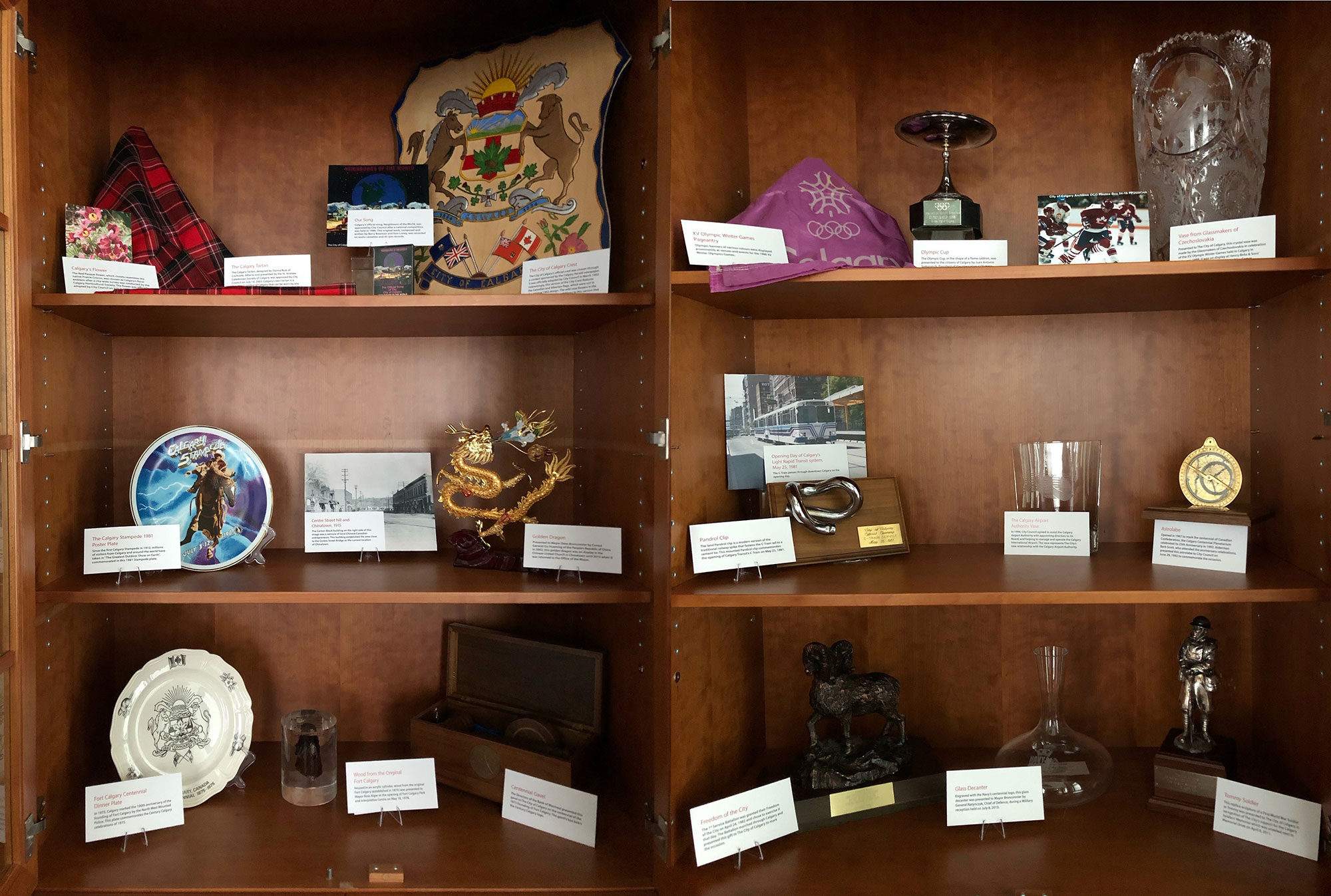
Symbols of Calgary
Calgary Tartan
The Calgary Tartan, designed by Donna Buie of Cochrane, Alberta, and presented by the St. Andrew-Caledonian Society of Calgary, was approved by City Council on July 14, 2003. Calgary’s own tartan is a registered symbol of Calgary that can be worn by any person for any reason whenever and wherever they like.
Red is a Calgary colour from the North West Mounted Police. Blue represents Calgary’s rivers, the Bow and Elbow. Yellow reflects our prairie and wheat fields to the east. Grey pays homage to the Rocky Mountains to the west. Black is for the oil and gas industry which has made Calgary prosper. White captures Calgary’s pride in, and the symbolism of, the White Hat.
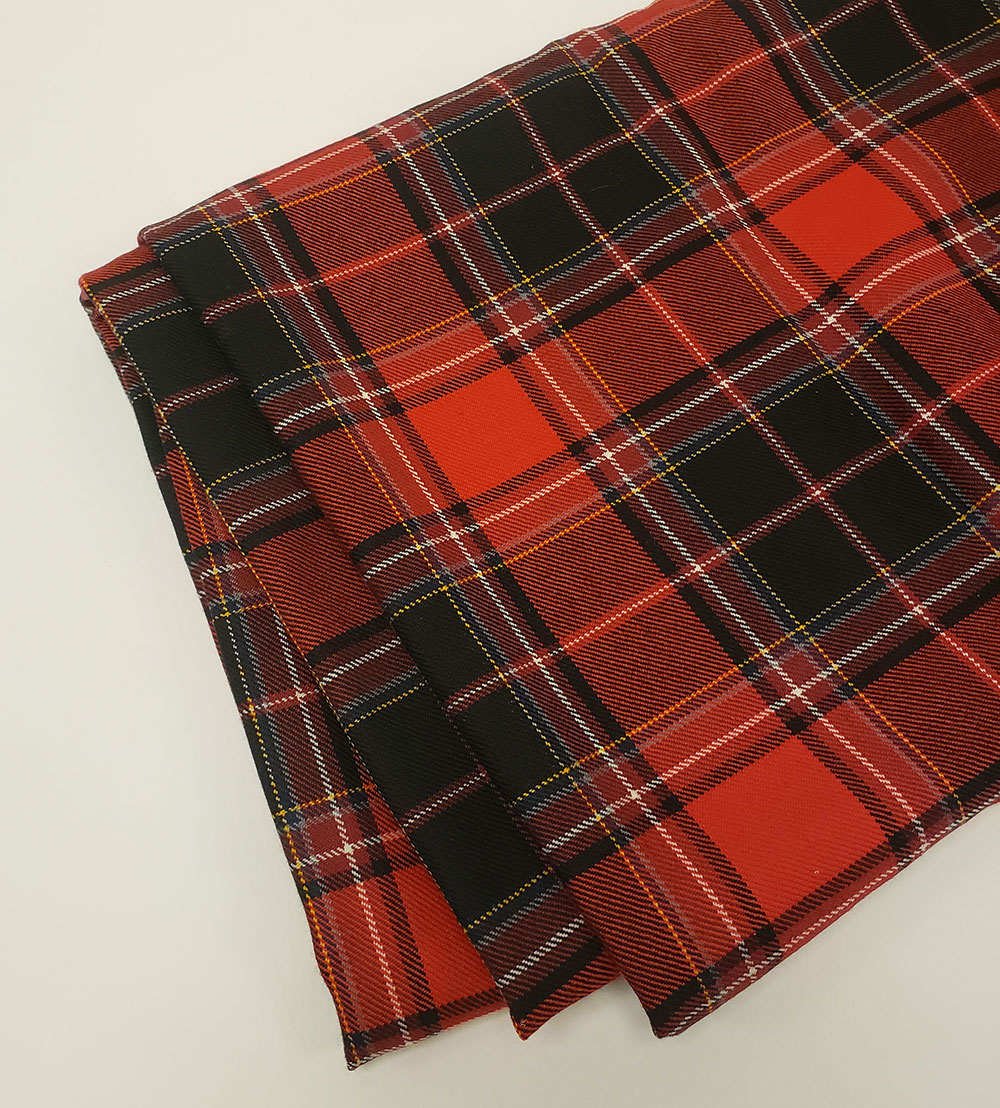
Our Song
Calgary’s official song, Neighbours of the World, was approved by City Council after winning a national competition held in 1986. This original work, composed and written by Barry Bowman and Tom Loney, was recorded on audio cassettes and 45 rpm records.
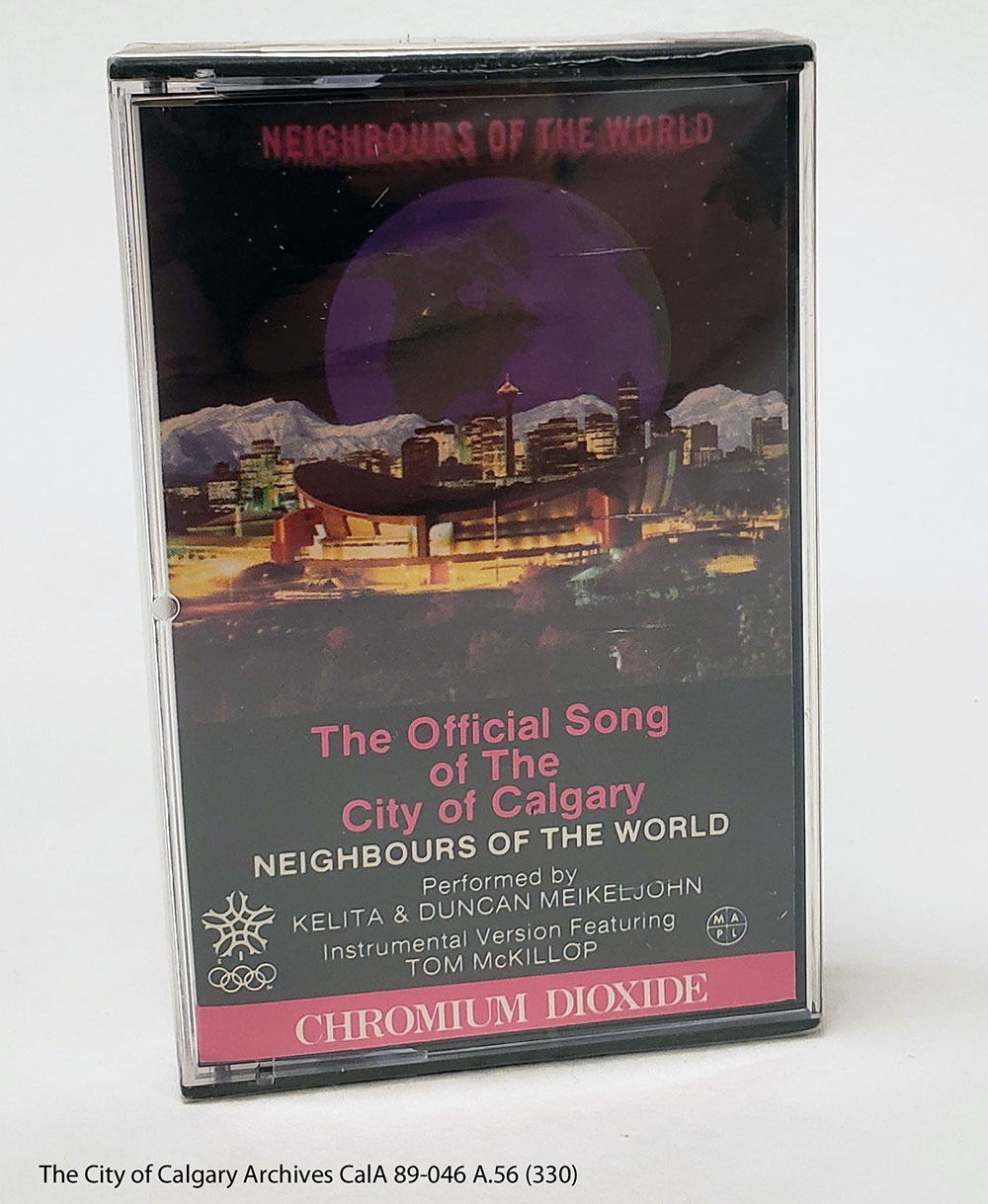
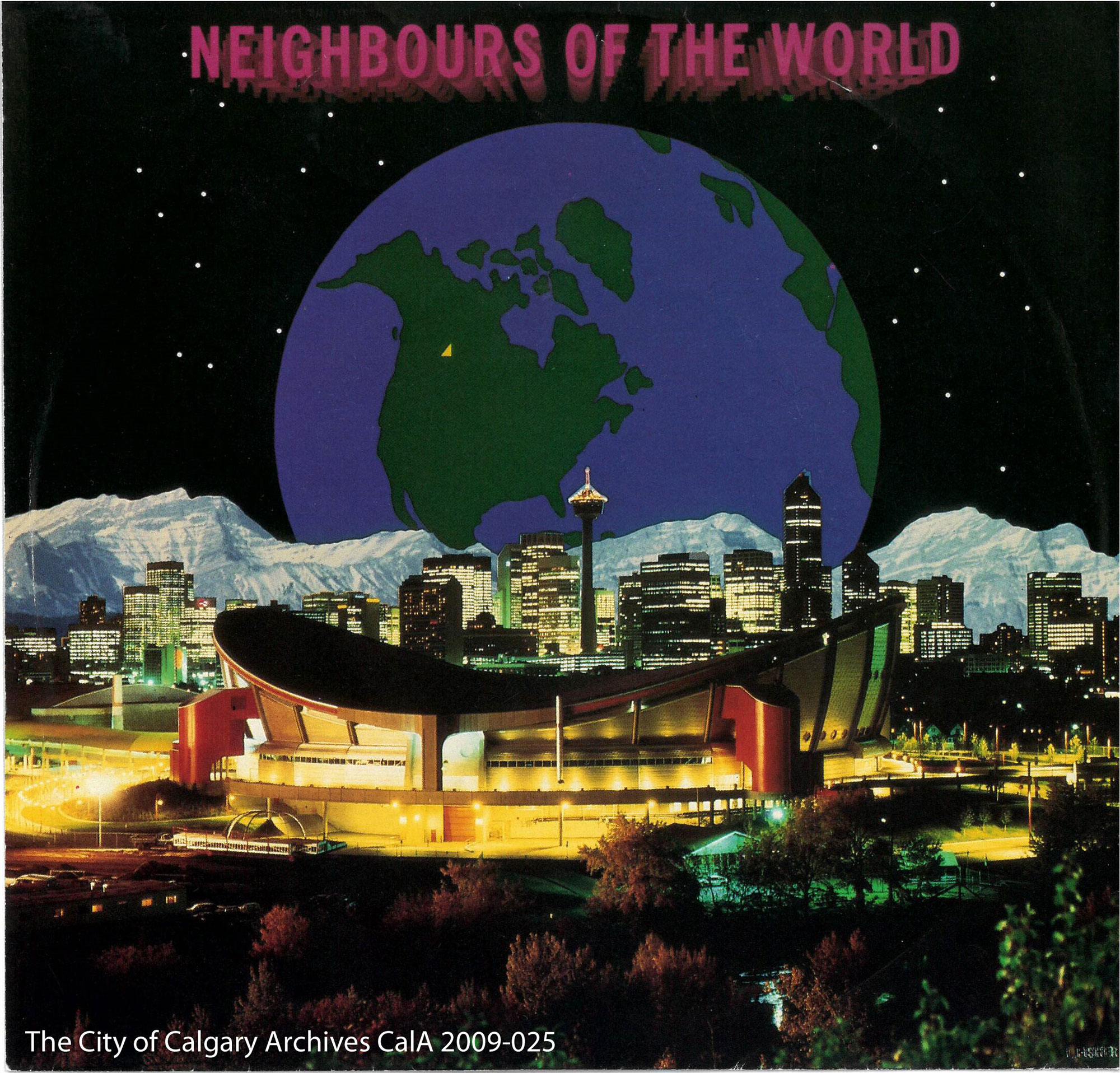
Neighbours of the World
The album cover design that accompanied the original release of Calgary’s song.
Calgary's Flower
The hardy Red Pasque flower was chosen and officially adopted by City Council on July 2, 1991.
These flowers grow in many parts of Alberta and are well adapted to Calgary’s climate.
The Red Pasque, which closely resembles the native Prairie Crocus, was chosen as Calgary’s floral emblem after a city-wide survey conducted by the Calgary Horticultural Society. The Society created a list of five flowers that grew well in the Calgary area and had citizens vote for their favourite.
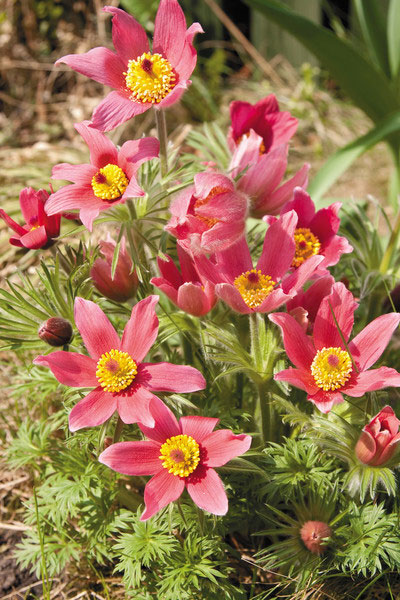
The City of Calgary Crest
The City of Calgary crest contains symbols of Calgary’s history and landscape. The original design was chosen during a competition put on by the Calgary Herald and adopted by Council in 1902. The chosen design ended up being a combination of designs provide by J.D. Wilson, A.C. Racey, and C.L. Taylor.
The crest has changed slightly throughout Calgary’s history. In the original contest, the Calgary Daily Herald incorrectly indicated that 1882 was the year Calgary was incorporated as a Town instead of 1884. This mistake resulted in the crest above the doors to Historic City Hall having the wrong date written on it.
Today the official City of Calgary crest contains the correct date of 1884. The mistake, despite being noticed by many since its 1902 creation, was not fixed until the 1970s. When the date on the crest was changed, Council made it official by adopting a bylaw in 1975.
The crest that was on display in the Mayor’s Office has the correct date of 1884, so it was likely created between 1975 and 1983. Interestingly, this unique version of the City crest features the Canadian and Albertan flags, which were not in the original 1902 design. The wild rose flowers in the bottom corners were also additions to this particular crest.
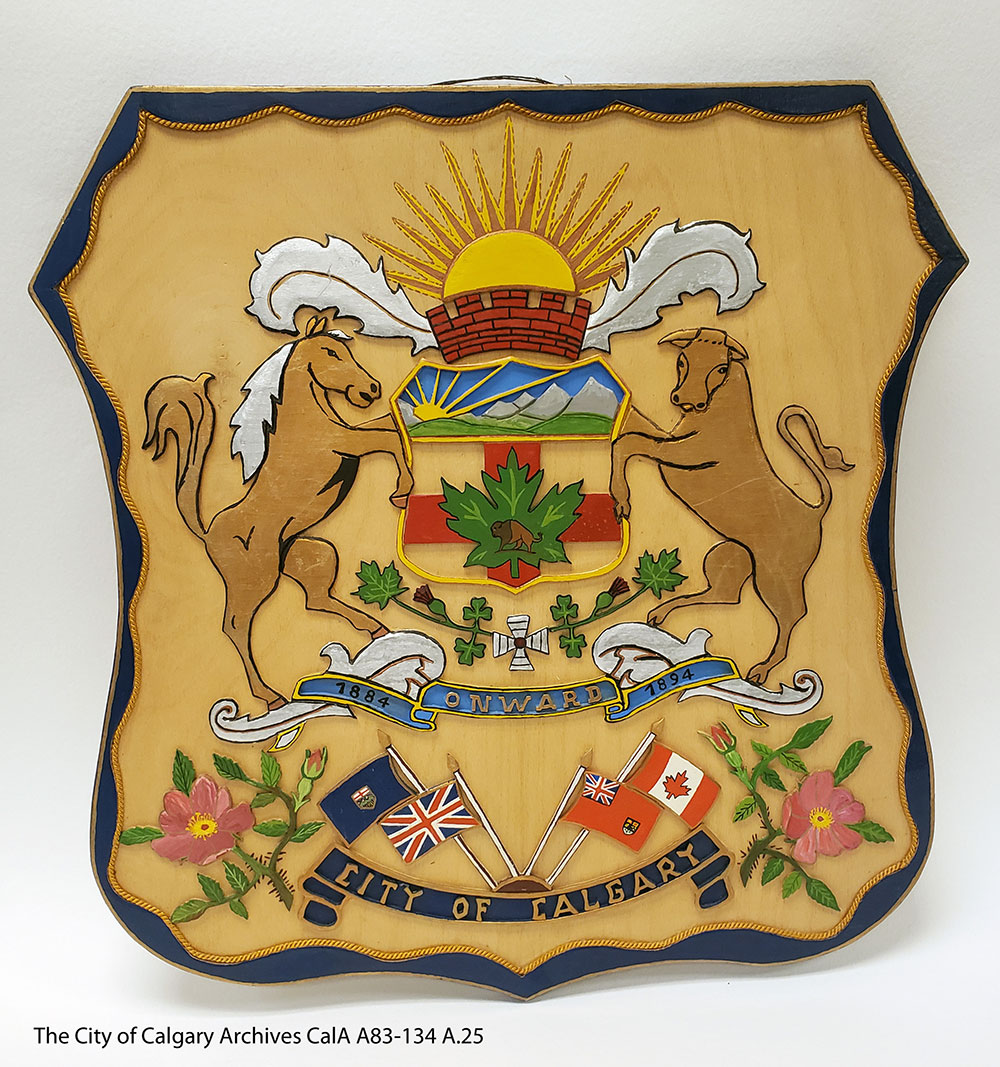
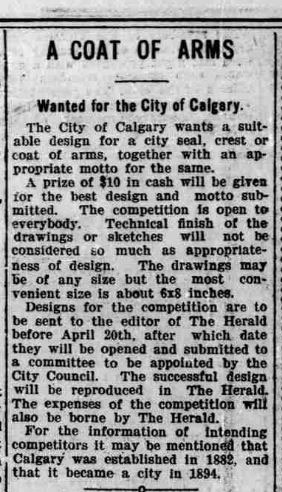
Calgary Daily Herald, March 30, 1901
This 1901 article shows the initial advertisement for the competition which led to the creation of the City of Calgary crest.
Originally published in The Calgary Herald, a Division of Postmedia Network Inc.
1988 XV Winter Olympics Games in Calgary
Olympic Cup
The Olympic Cup, in the shape of a flame caldron, was presented to the citizens of Calgary by Juan Antonio Samaranch, President of the International Olympic Committee, at a special ceremony at Olympic Plaza on February 13, 1989. The ceremony was in celebration of the first anniversary of the 1988 XV Winter Olympic Games.
Awarded since 1906, the Olympic Cup is the highest honor given by the International Olympic Committee. Calgary received the cup for hosting the XV Winter Olympic Games and the significant contribution we made to the development of the Olympic movement.
Mayor Ralph Klein, who accepted the award at the 1989 ceremony, claimed it “belong[ed] to the citizens of Calgary who contributed so much to the success of the Games” (Mike Board, Calgary Herald February 14, 1989).
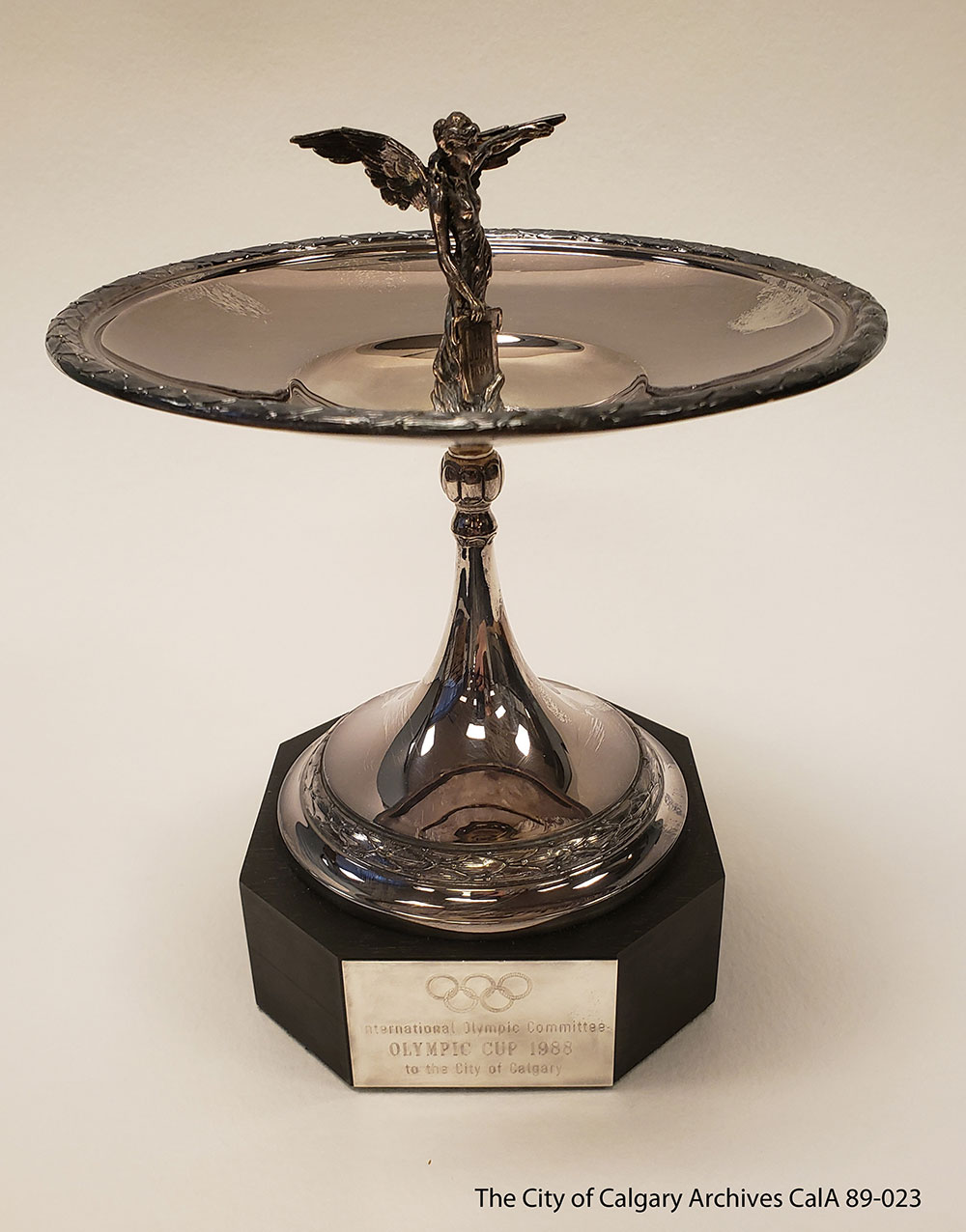
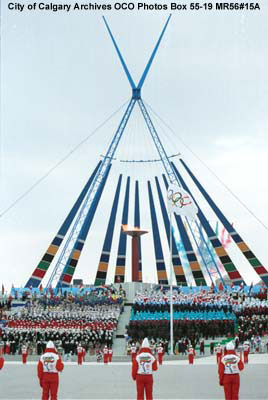
Opening Ceremonies, the Olympic Flame and Cauldron, February 13, 1988
The opening ceremonies for the XV Olympic Winter Games were held at McMahon Stadium in Calgary.
It featured 60,000 spectators wearing various colours to create designs throughout the stadium.
Vase gifted from Glassmakers of Czechoslovakia
Presented to the City of Calgary, this crystal vase was made by the Glassmakers of Czechoslovakia in celebration of the XV Olympic Winter Games.
It was on display at Henry Birks & Sons’ downtown location for the duration of the Games held in Calgary in February 1988.
Countries and cities from around the world provided gifts of congratulations and appreciation before and after the 1988 Winter Games.
The City of Calgary Archives has many artifacts that represent the relationships created through the 1988 Olympics.
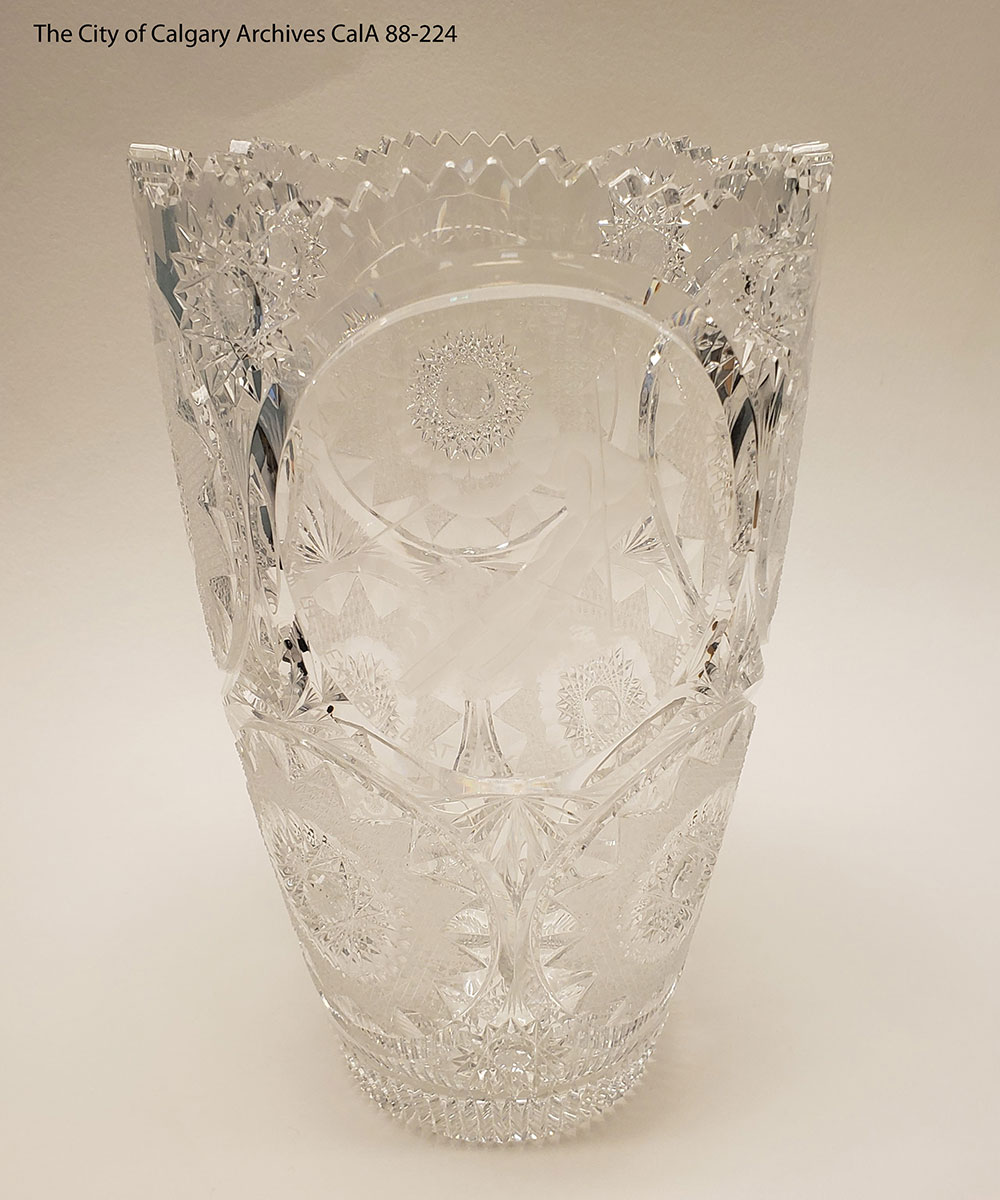
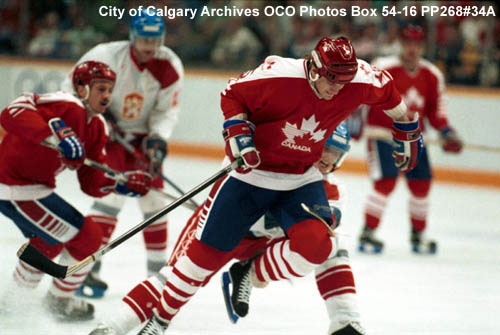
Ice Hockey, Canada vs. Czechoslovakia, 1988
Team Canada’s Men’s Hockey Team played Czechoslovakia on February 27, 1988. Team Canada won this game by a score of six to three and placed fourth overall.
XV Olypmic Winter Games Pagentry
Olympic banners of various colours were displayed prominently at venues and events for the 1988 XV Winter Olympics Games. The banners came in vibrant colours and often showcased the logo of the XV Winter Games and the Olympic Rings.
Brightly coloured banners were used throughout Olympic venues, including these banners on display at the Canmore Nordic Centre.
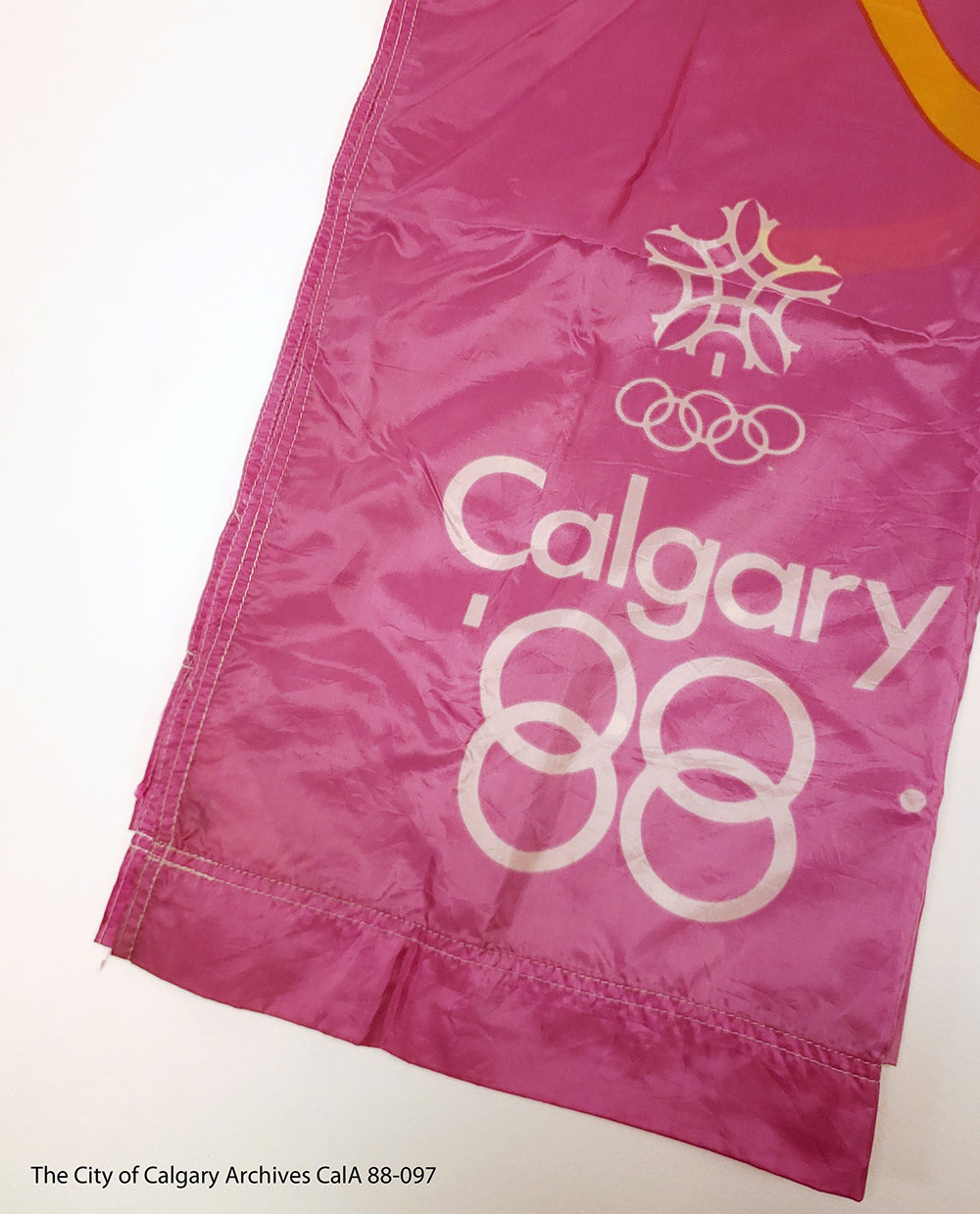
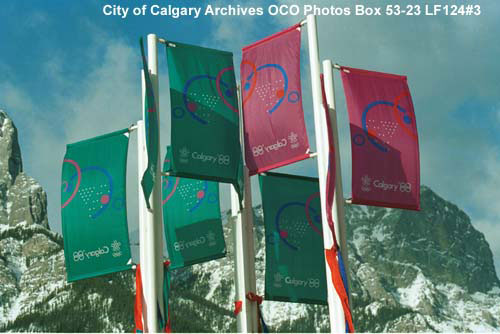
Pageantry at Canmore Nordic Centre, Canmore, Alberta, 1988
Brightly coloured banners were used throughout Olympic venues, including these banners on display at the Canmore Nordic Centre.
Calgary Infrastructure
Pandrol Clip
The land Pandrol clip is a modern version of the traditional railway spike that fastens the C-Train rail to a cement tie. This mounted Pandrol clip commemorates the opening of Calgary Transit’s C-Train on May 25, 1981.
As the population and size of Calgary grew, The City of Calgary created new transit options for Calgarians. Transit operations in the city began in 1909 with street cars, under the name of the Calgary Electric Railway. In 1931, buses were slowly introduced into Calgary. This eventually led to the use of trolley coaches.
By 1946 The City was using rubber-tired buses and transit services spread throughout the city to meet the needs of citizens. The Light Rail Transit system, the C-Train, was more than an important development for Calgary Transit; It was an important development for Light Rail Transit systems in North America.
When the C-Train opened in 1981, it increased accessibility to the downtown core while encouraging commuters to take public transit.
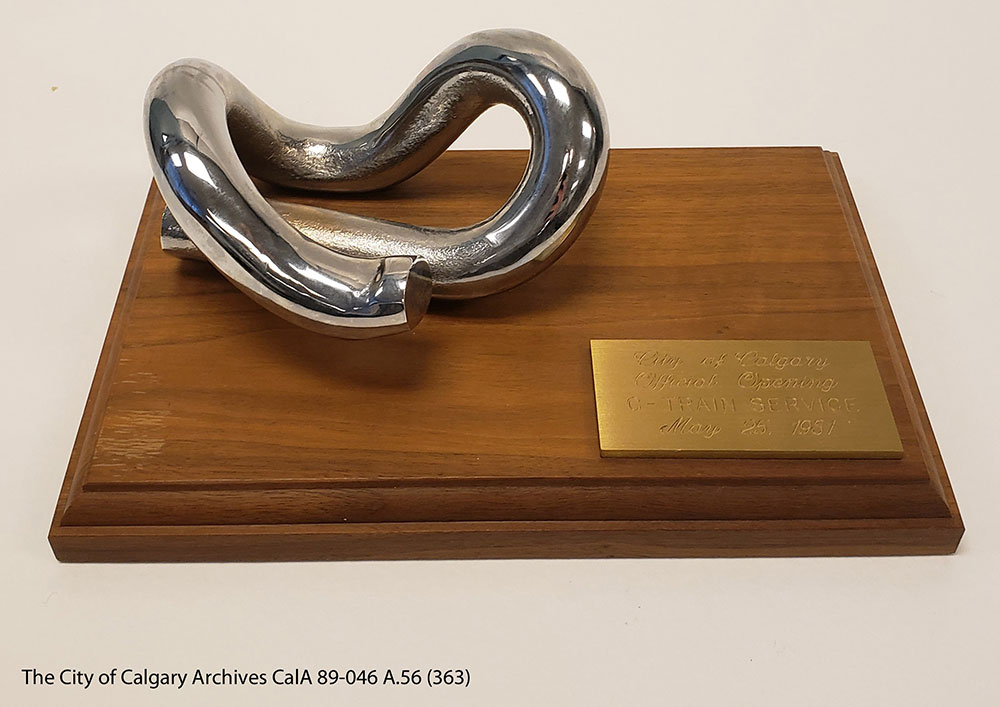
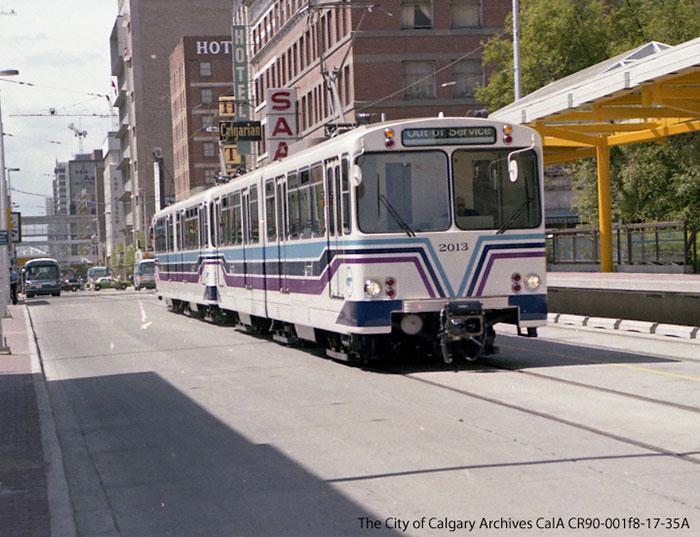
Opening Day of Calgary’s Light Rapid Transit system, May 25, 1981
The C-Train passes through downtown on the opening day.
Planetarium
Opened in 1967 to mark the centennial of Canadian Confederation, the Calgary Centennial Planetarium closed in 2011.
Alderman Barb Scott, who attended the anniversary celebrations, presented this astrolabe to City Council on June 29, 1992 as a memento of the occasion. An astrolabe is a tool that was used by past astronomers to measure astronomical events and objects.
The Planetarium (1967-1984) and eventually the Science Centre (1984-2011) welcomed Calgarians to learn about the world around them and outer space. Today this historically important structure houses an art gallery.
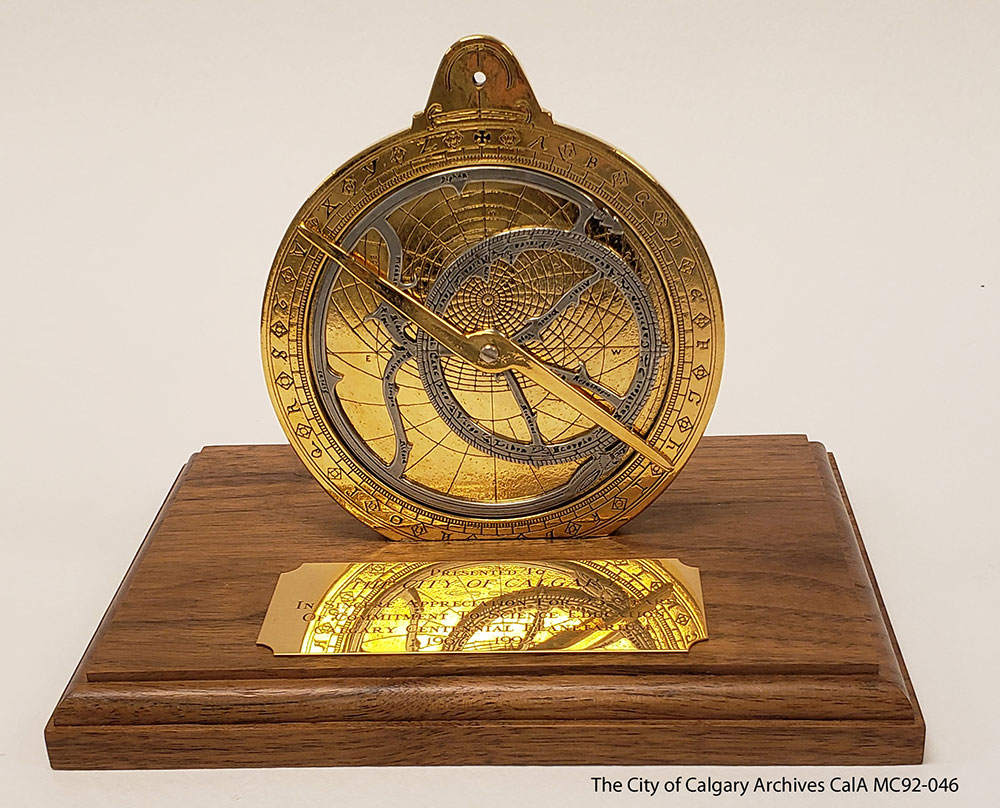
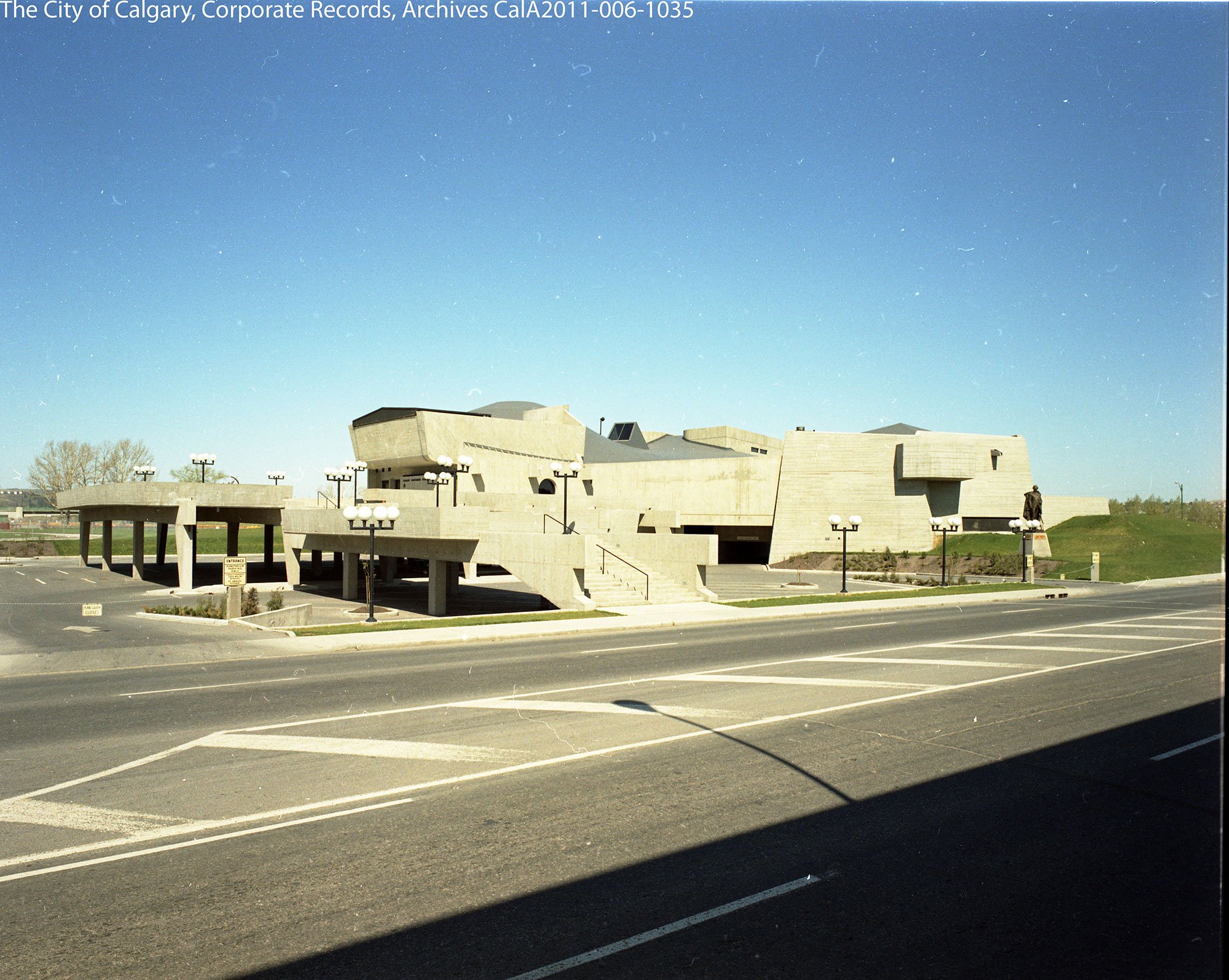
The Calgary Planetarium, Bill Onions Photography, 1969
Opened in 1967, the Calgary Centennial Planetarium, designed by architect Jack Long, was an important place for Calgarians to learn about science, space and the world around them. The planetarium closed in 2011.
Calgary Airport
In 1994, City Council agreed to assist the Calgary Airport Authority with appointing directors to its Board, and helping to manage and operate the Calgary International Airport. The vase represents the City’s new relationship with the Calgary Airport Authority.
McCall Field Airport, now the Calgary International Airport, was originally opened in 1938. The airport has grown to suit the needs of Calgary’s growing population.
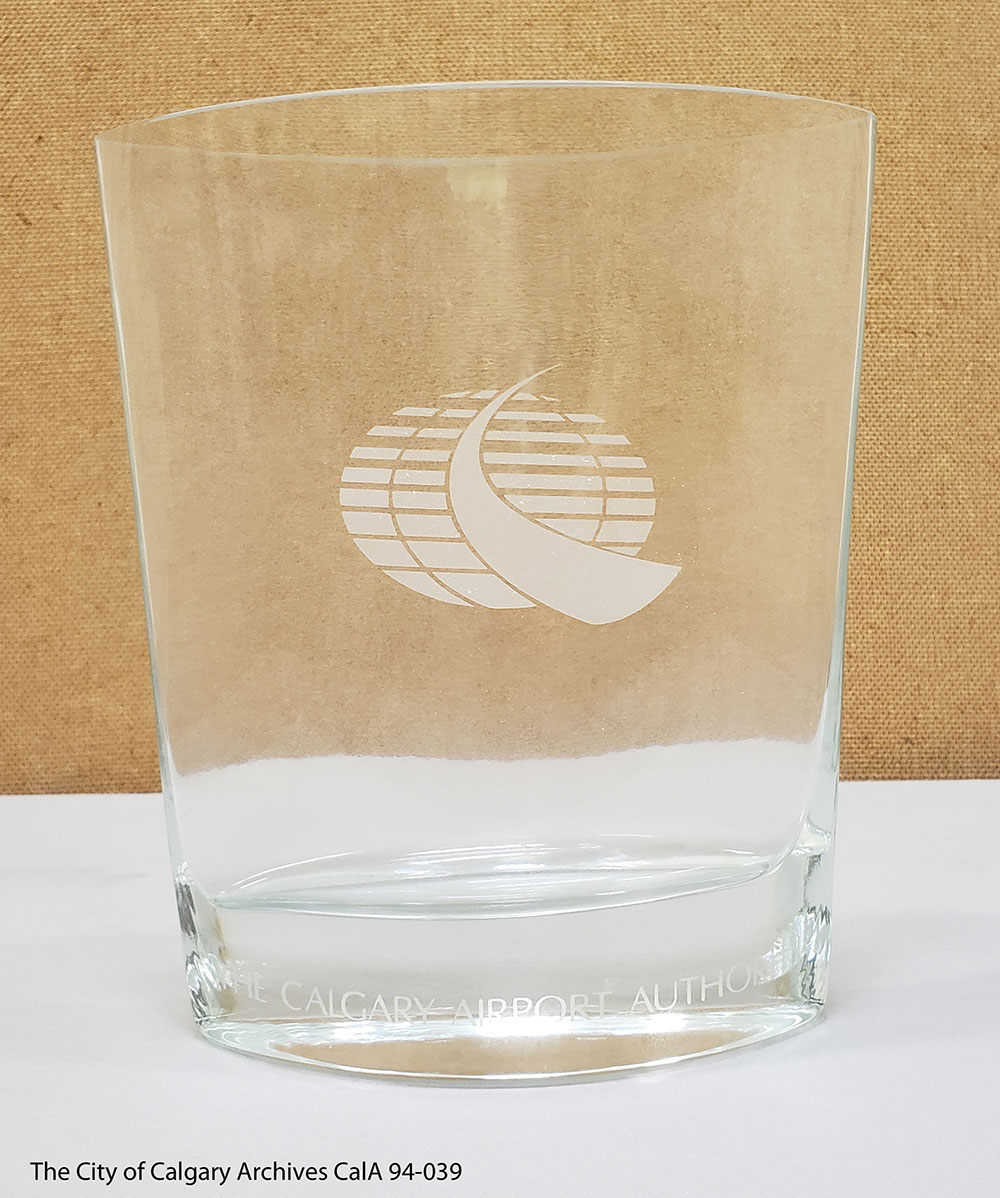
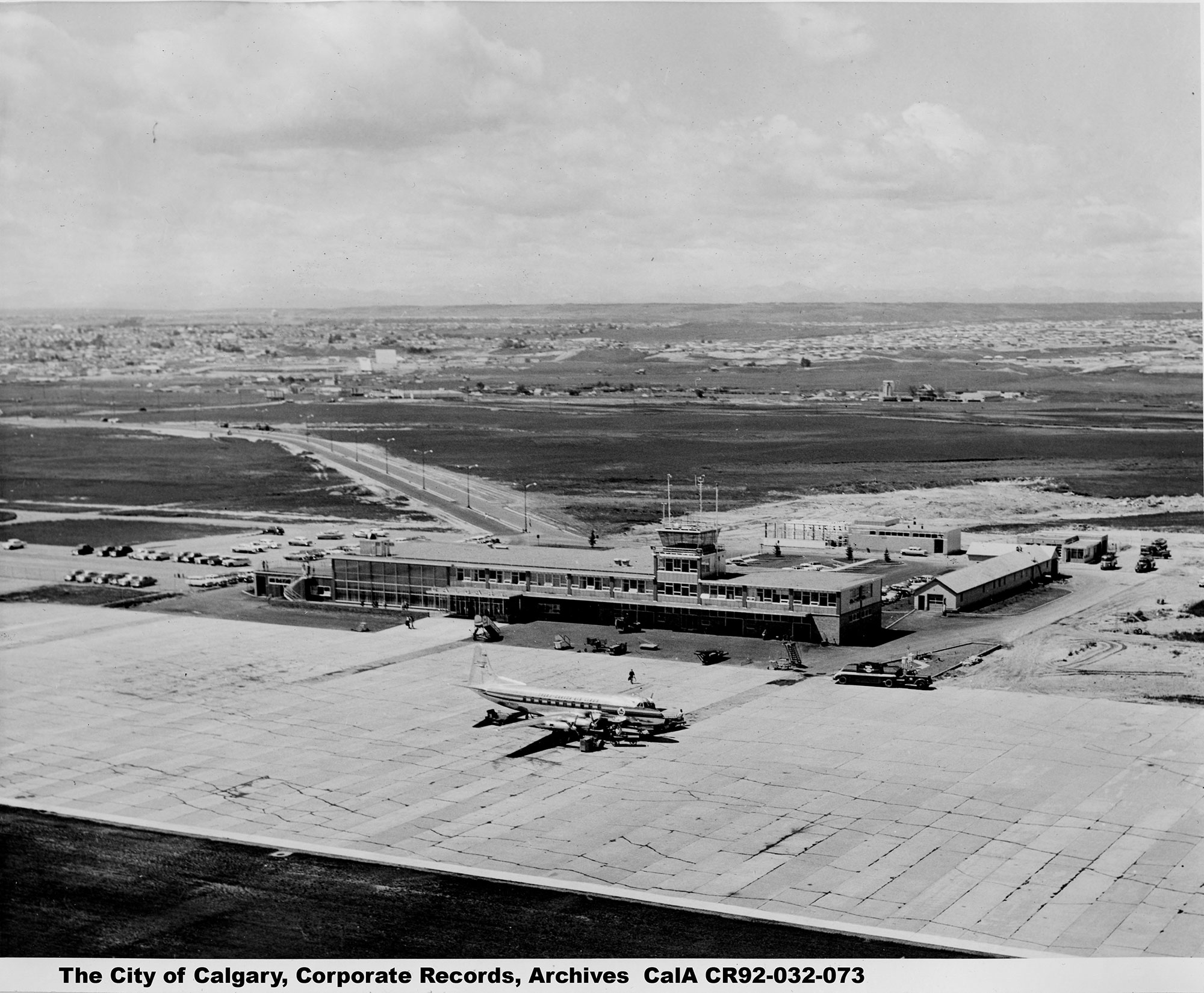
Aerial view of the Calgary McCall Airport, K.T. Hyde Photographer, 1958
McCall Field airport, now the Calgary International Airport, originally opened in 1938.
Fort Calgary
Wood from the original Fort Calgary
Housed in an acrylic cylinder, this wood from the original Fort Calgary (established in 1875) was presented to Mayor Ross Alger at the opening of Fort Calgary Park and Interpretive Centre on May 18, 1978.
Fort Calgary’s Interpretive Centre is located on the same site as the original North West Mounted Police’s Fort Calgary. It’s a place to tell the stories of the many peoples who have met and lived at the confluence of the Bow and Elbow rivers.
The Fort Calgary Preservation Society has supported the operations of the Fort since 1977. The opening day ceremonies were made possible through the actions of various groups. The ceremonies were attended by a Veteran of the Fort, which closed in 1914.
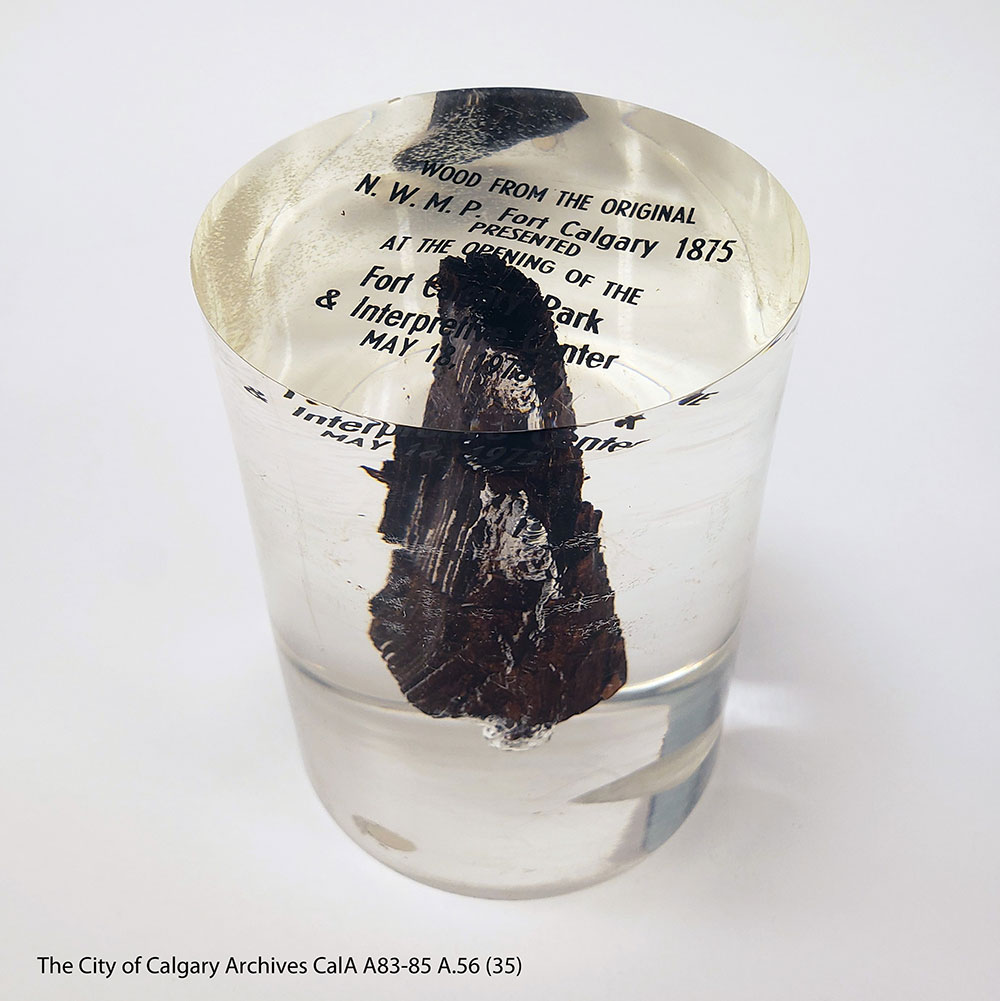
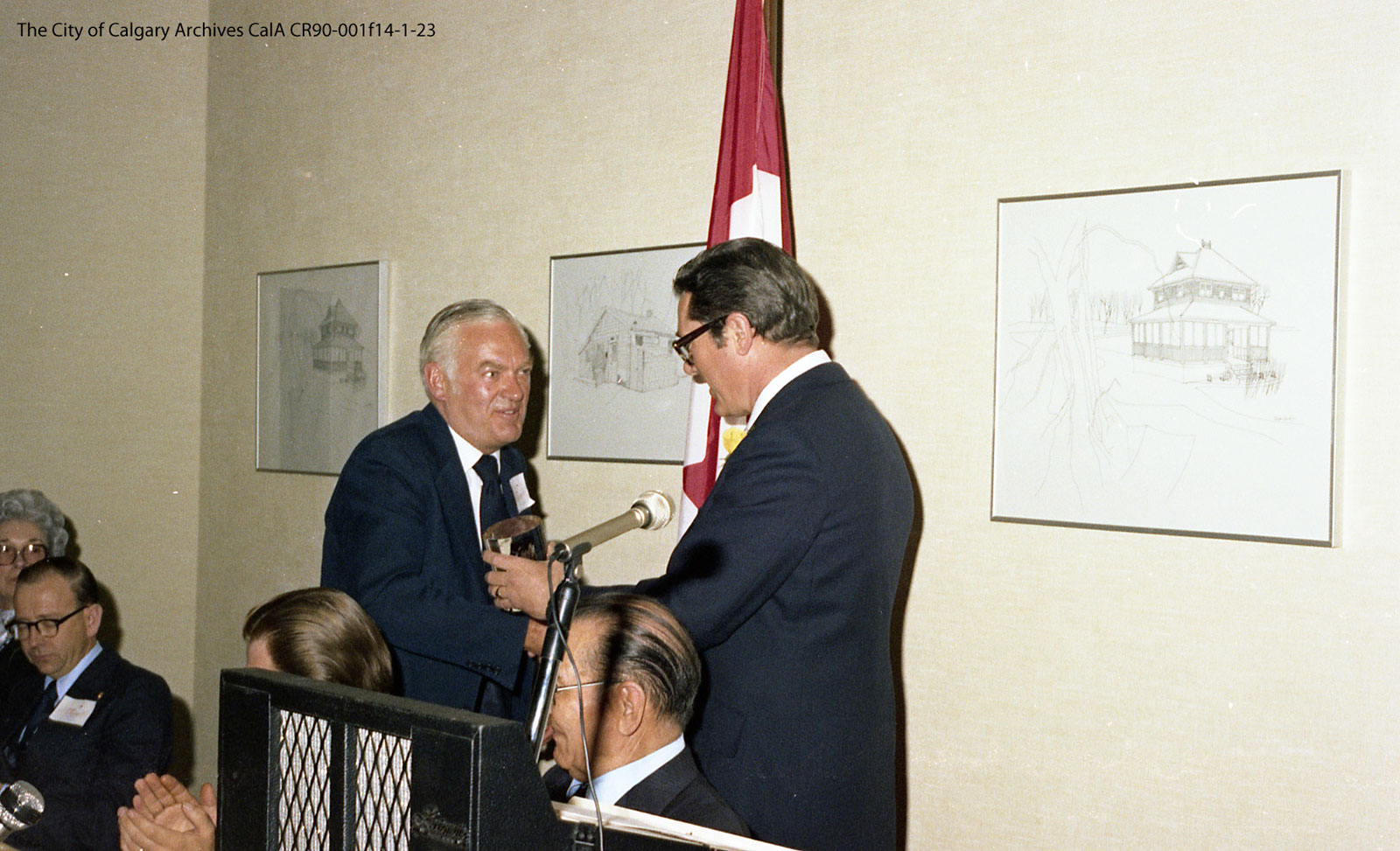
Opening of Fort Calgary, May 18, 1978
Mayor Ross Alger accepts the petrified wood from the original North West Mounted Police Fort at a ceremony for the opening of Fort Calgary Park and Interpretive Centre.
Fort Calgary Centennial dinner plate
In 1975, Calgary marked the 100th anniversary of the establishment of Fort Calgary by the North West Mounted Police. This plate commemorates the Century Calgary celebrations.
The Rotary Club of West Calgary commissioned this design and created several thousand of these plates. Plates originally sold for $14.95 plus 55 cents for handling. The funds raised went to local charities.
Plates were produced by Josiah Wedgewood & Sons of England. Wedgewood had produced previous dinnerware with The City crest at the start of the twentieth century.
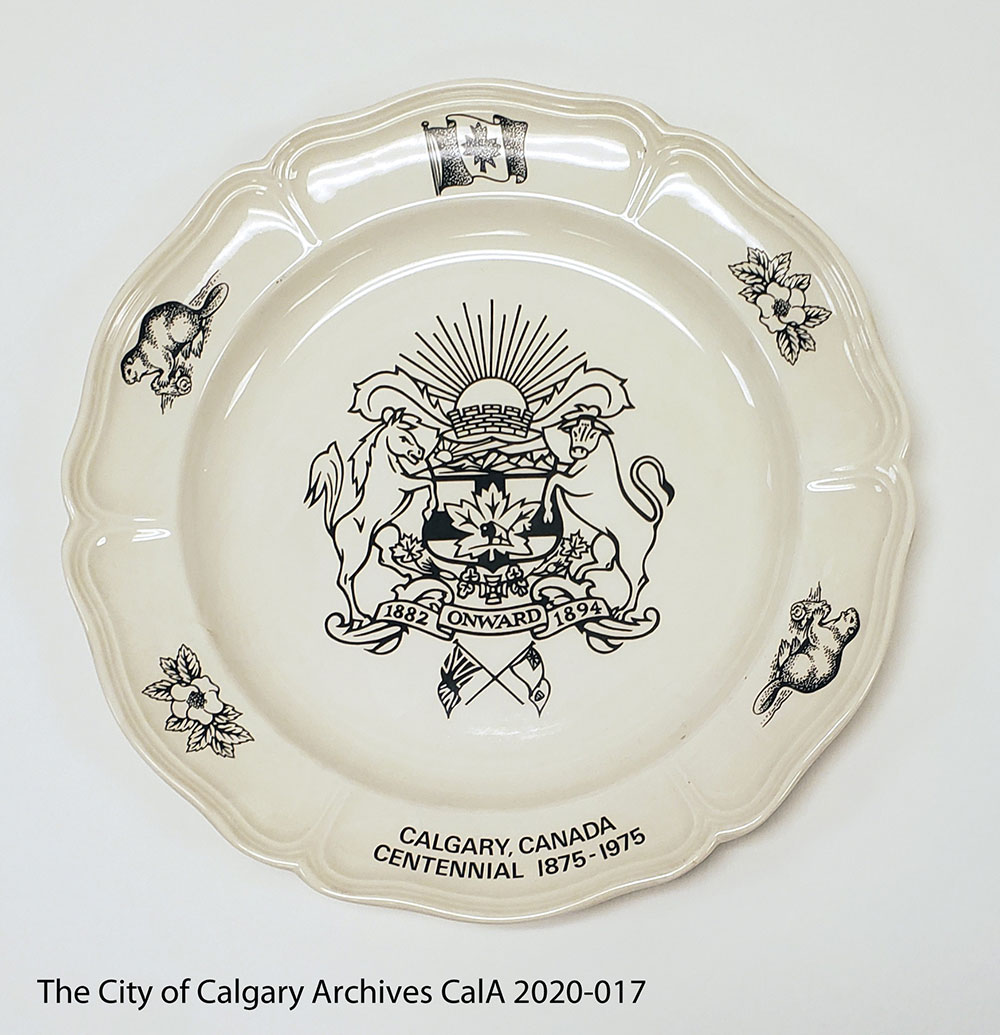
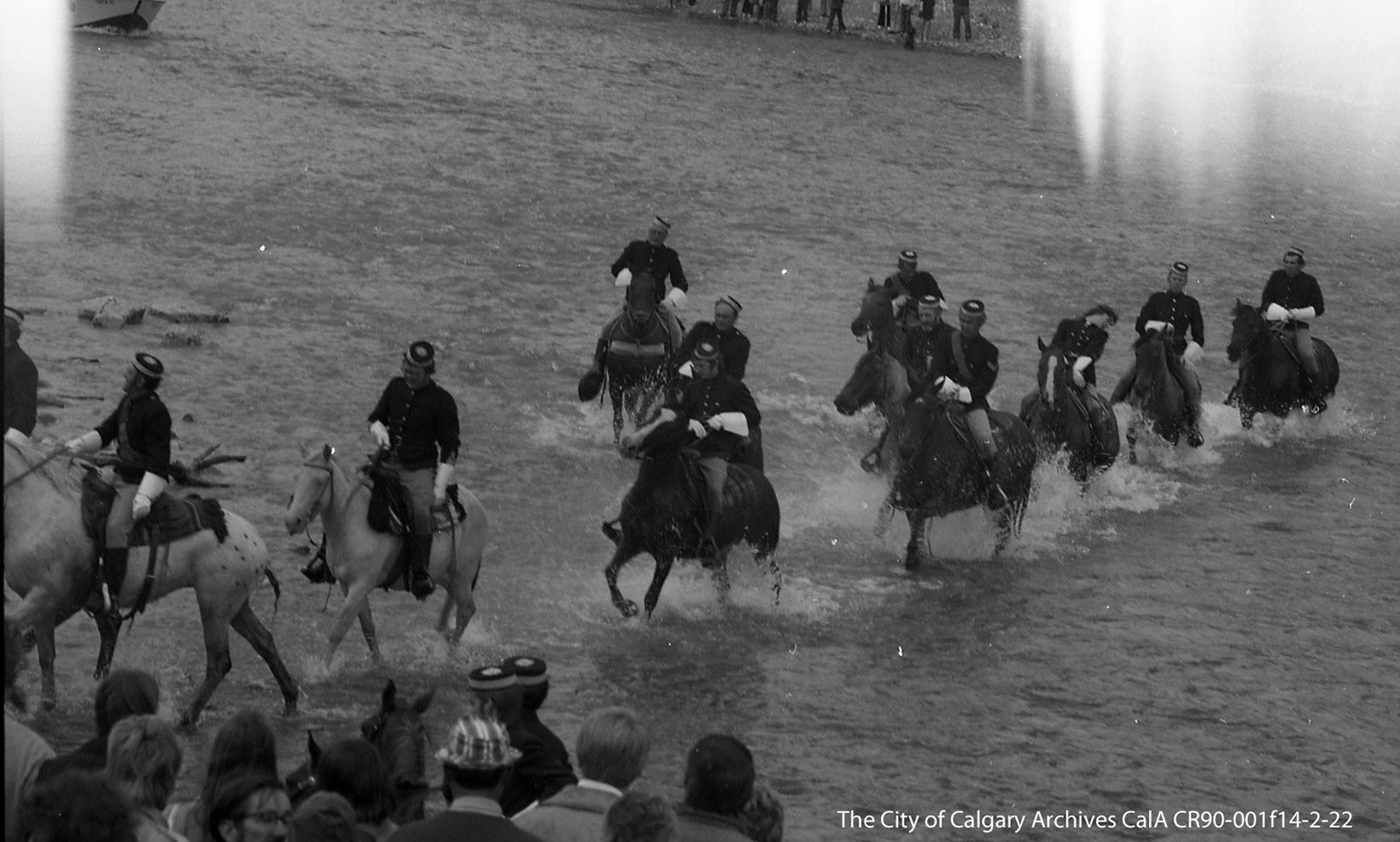
Opening Day Re-Enactment at Fort Calgary, May 18, 1978
This re-enactment shows the North West Mounted Police crossing at the confluence of the Bow and Elbow Rivers to establish Fort Calgary.
Centennial Gavel
The Directors of the Bank of Montreal presented this gavel to The City of Calgary on the centennial of the 1875 establishment of Fort Calgary.
The gavel’s box bears the Century Calgary logo. This logo played an important role in municipal developments and historical studies that were done in Calgary in 1975. It was chosen through a competition where Calgarians proposed designs.
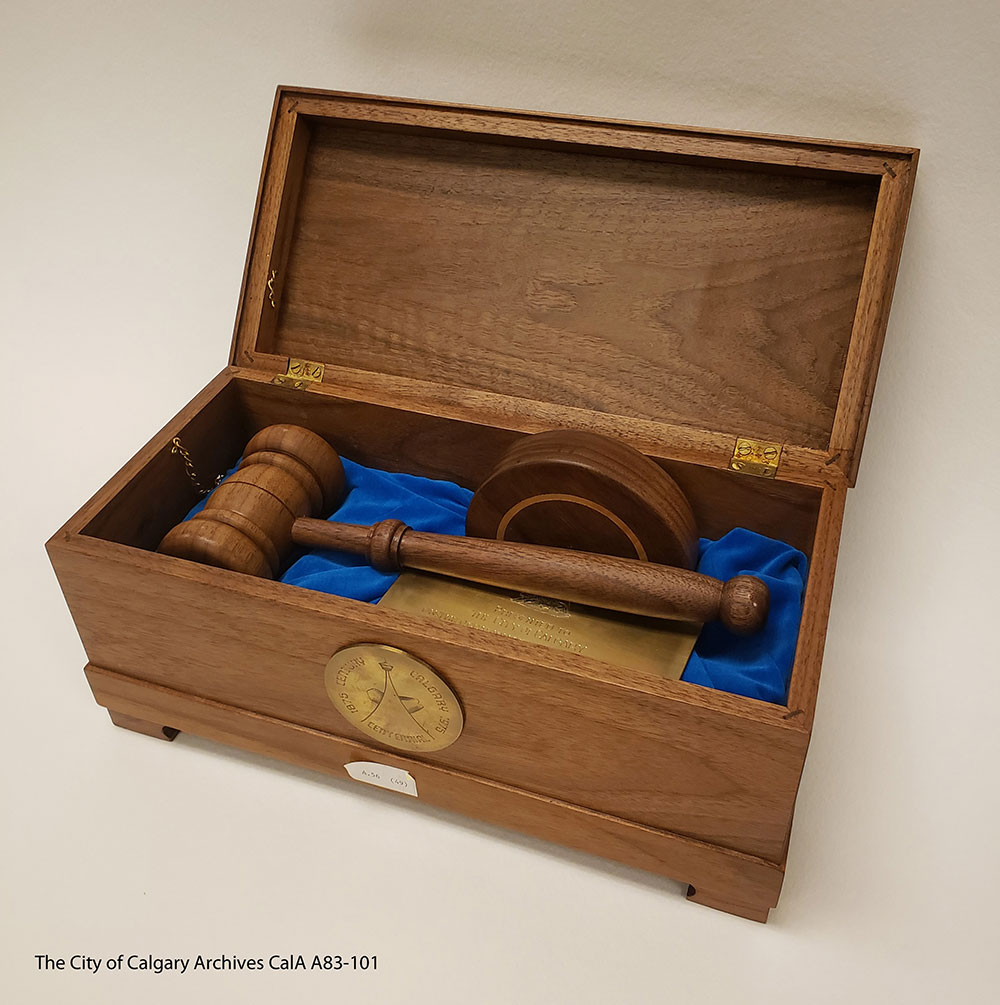
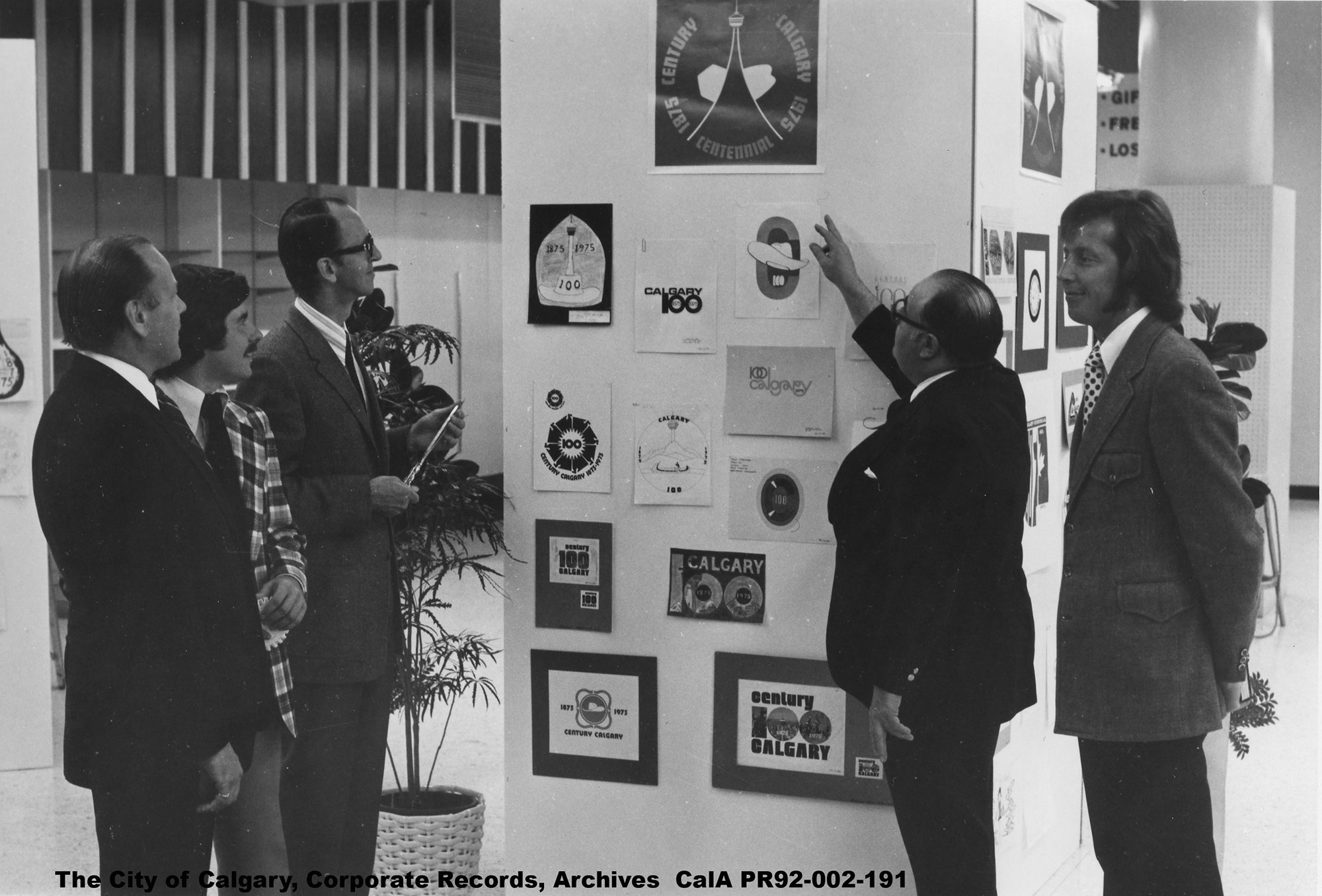
Opening, Century Calgary logo display, 1973
A display inside of the Hudson’s Bay Company store showcased various Century Calgary logos that were proposed by Calgarians to be used in celebrations.
Calgary Communities and Traditions
Golden Dragon
Presented to Mayor Dave Bronconnier by Consul General Gu Huaming of the People’s Republic of China in 2002, this golden dragon was on display in the Chinese United Church in Chinatown.
In 2015, it was returned to the Office of the Mayor.
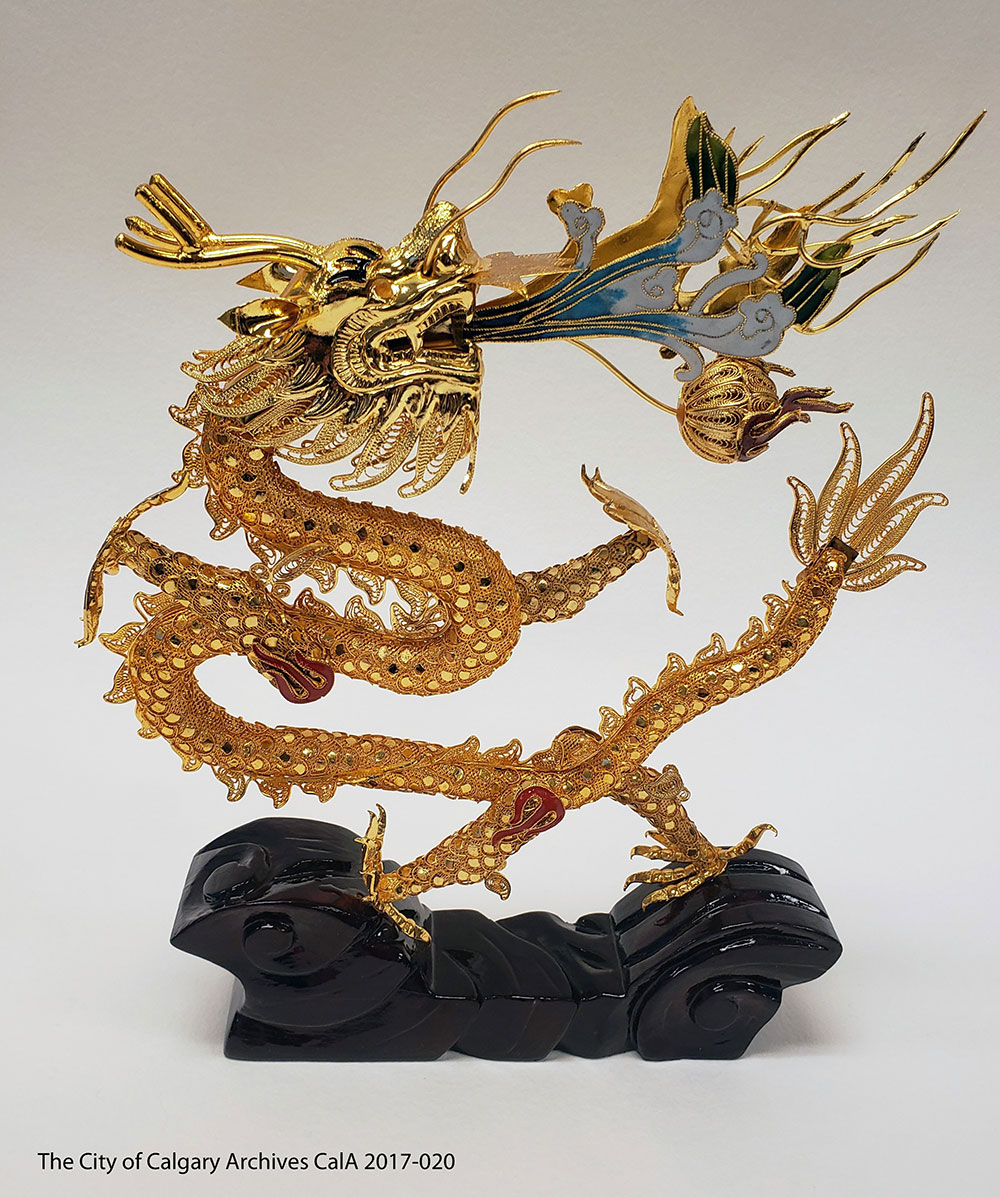
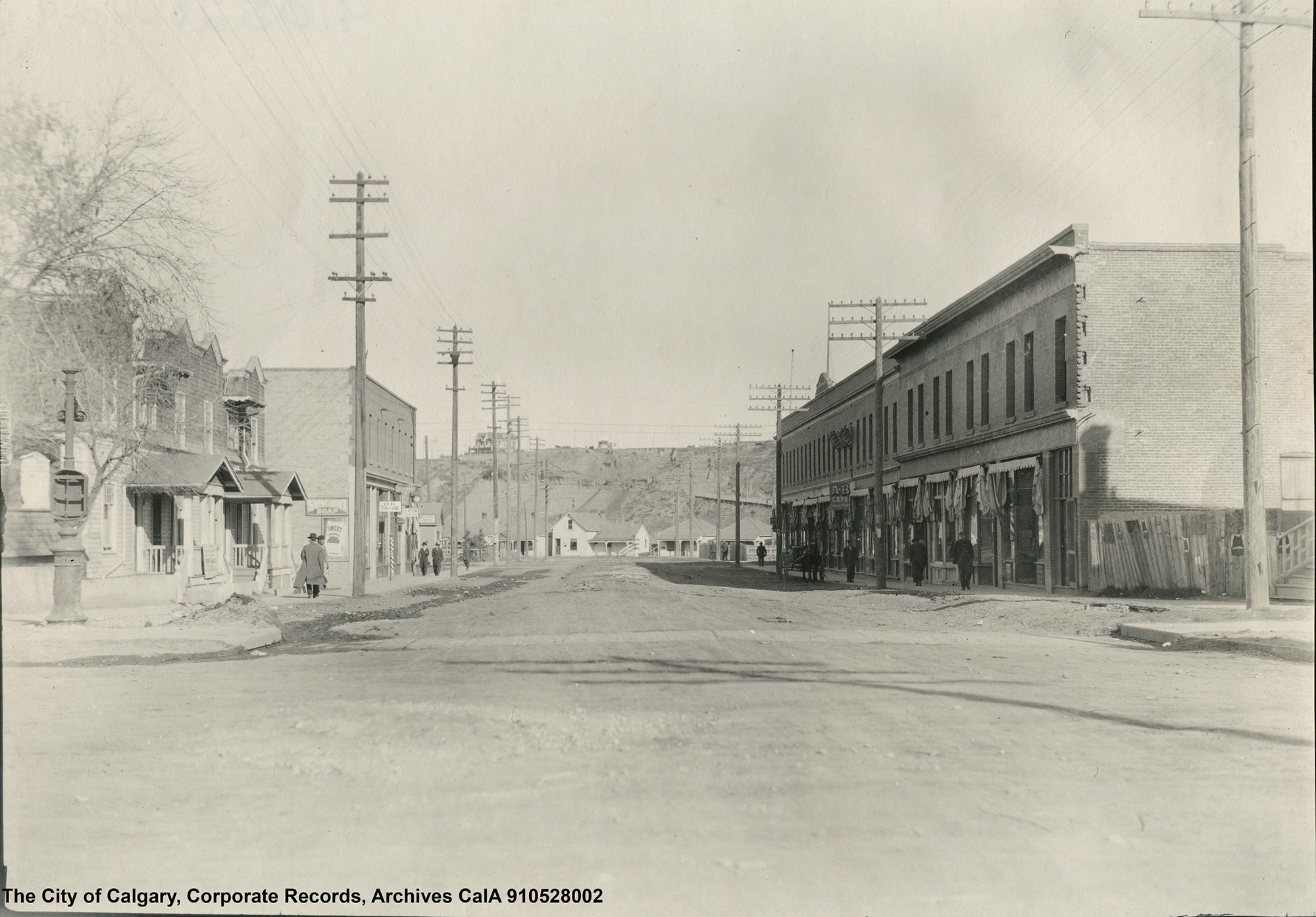
Centre Street hill and Chinatown, 1915
The Canton Block building on the right side of this image was a venture of local Chinese Canadian entrepreneurs.
This building established the area close to the Centre Street Bridge as the current location of Chinatown in Calgary.
Calgary Stampede Poster Plate
Since the first Calgary Stampede in 1912, millions of visitors from Calgary and around the world have taken in The Greatest Outdoor Show on Earth.
This commemorative plate was created using the 1981 Calgary Stampede logo. In 1981, The City of Calgary sent delegates to the United Kingdom to promote Alberta tourism. A large part of these promotions included Stampede themed events, which gave potential tourists a taste of what to expect in Calgary.
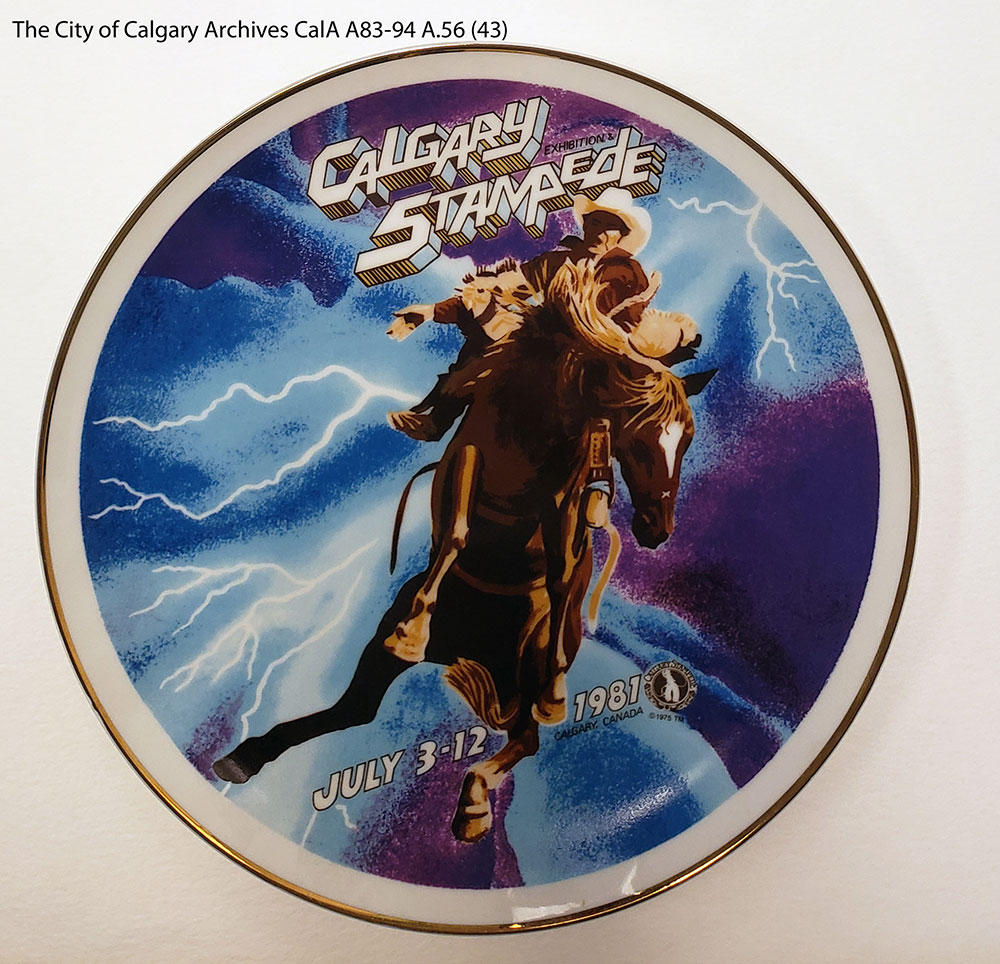
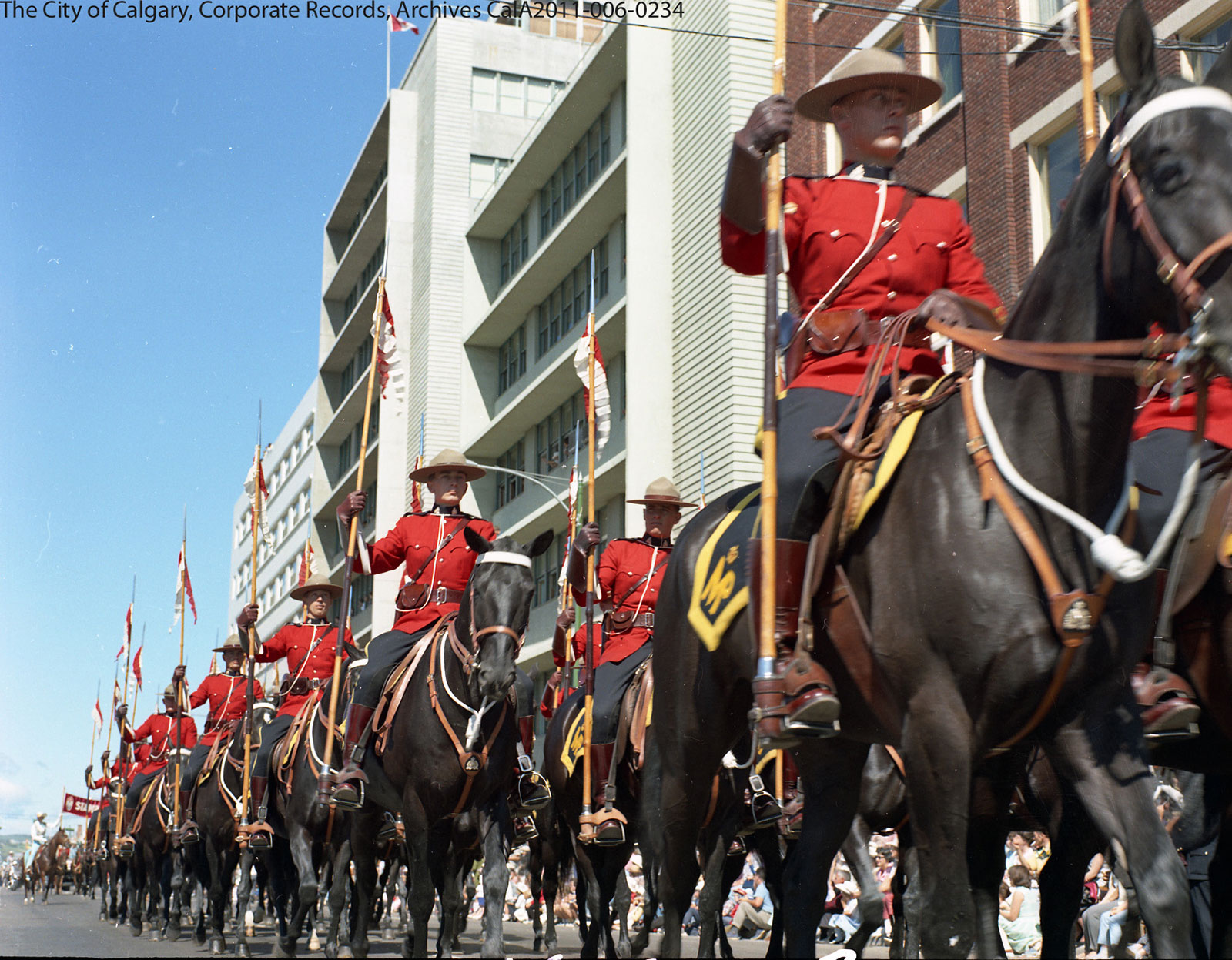
Royal Canadian Mounted Police in the Calgary Stampede Parade, Bill Onions Photography, 1966
The Stampede Parade marks the beginning of the annual Calgary Stampede.
Calgary Military Relationships
Statue Commemorating the Freedom of the City
The 1st Service Battalion was granted their Freedom of The City on April 24, 1982 and chose to exercise it that day. The Battalion marched through Calgary and presented this gift to The City of Calgary to mark the occasion.
Freedom of the City is rooted in various traditions from around the world. Battalions stationed in a city request and are granted Freedom of the City at different times throughout the year for military parades.
The ceremony conveys the close ties and trust between the city and military. Once Freedom of the City is granted, the recipient can apply to exercise their Freedom of the City annually.
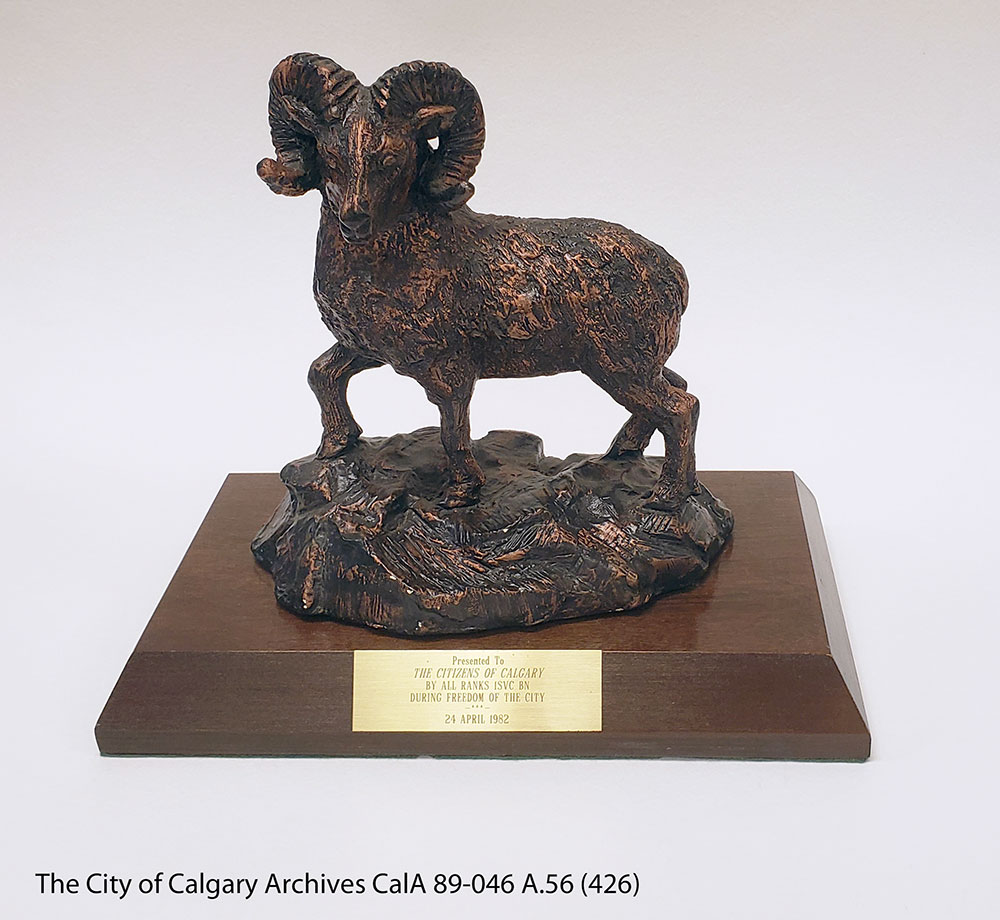
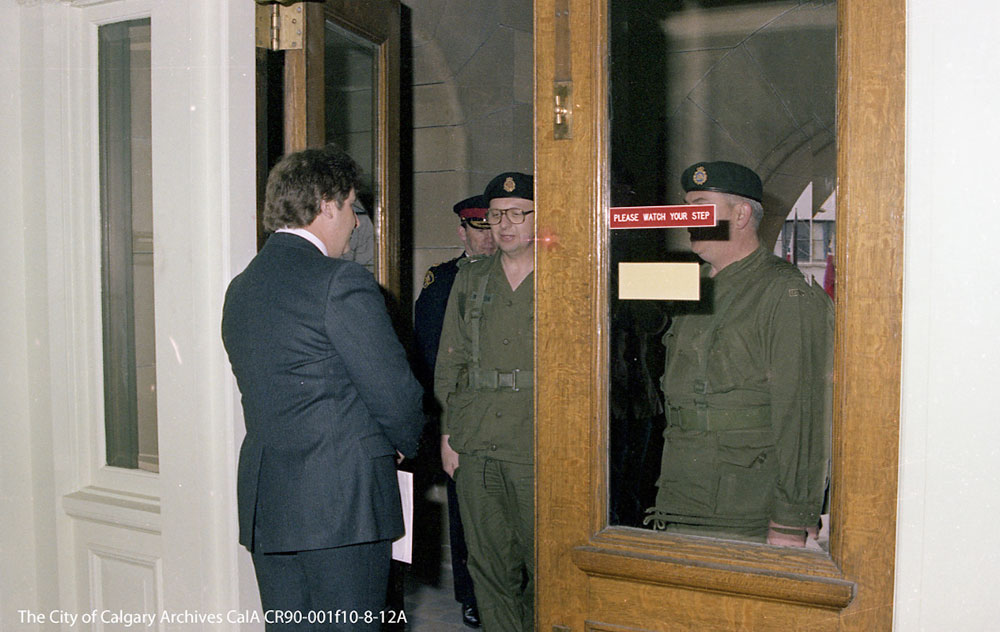
Freedom of the City, April 24, 1982
The Freedom of the City was granted to the 1st Service Battalion and the 14 (Calgary) Service Battalion on April 24, 1982. The ceremony includes knocking on the door of City Hall to request permission to march through the city’s streets.
Glass Decanter
Engraved with the Navy’s centennial logo, this glass decanter was presented to Mayor Bronconnier by General Natynczyk, Chief of Defence, during a Military reception held on July 8, 2010.
On this day, General Natynczyk was hosting his US counterpart, Admiral James G. Stavridis, Commander US European Command and NATO's Supreme Allied Commander in Europe (SACEUR); and his deputy General, Sir John McColl, Deputy Commander SACEUR.
This decanter highlights the important connection between Calgary and the Canadian Navy. HMCS Calgary is a frigate in the Calgary Navy, which has operated since 1995. Another ship, commissioned in 1941, also bore this name until its service ended in 1945.
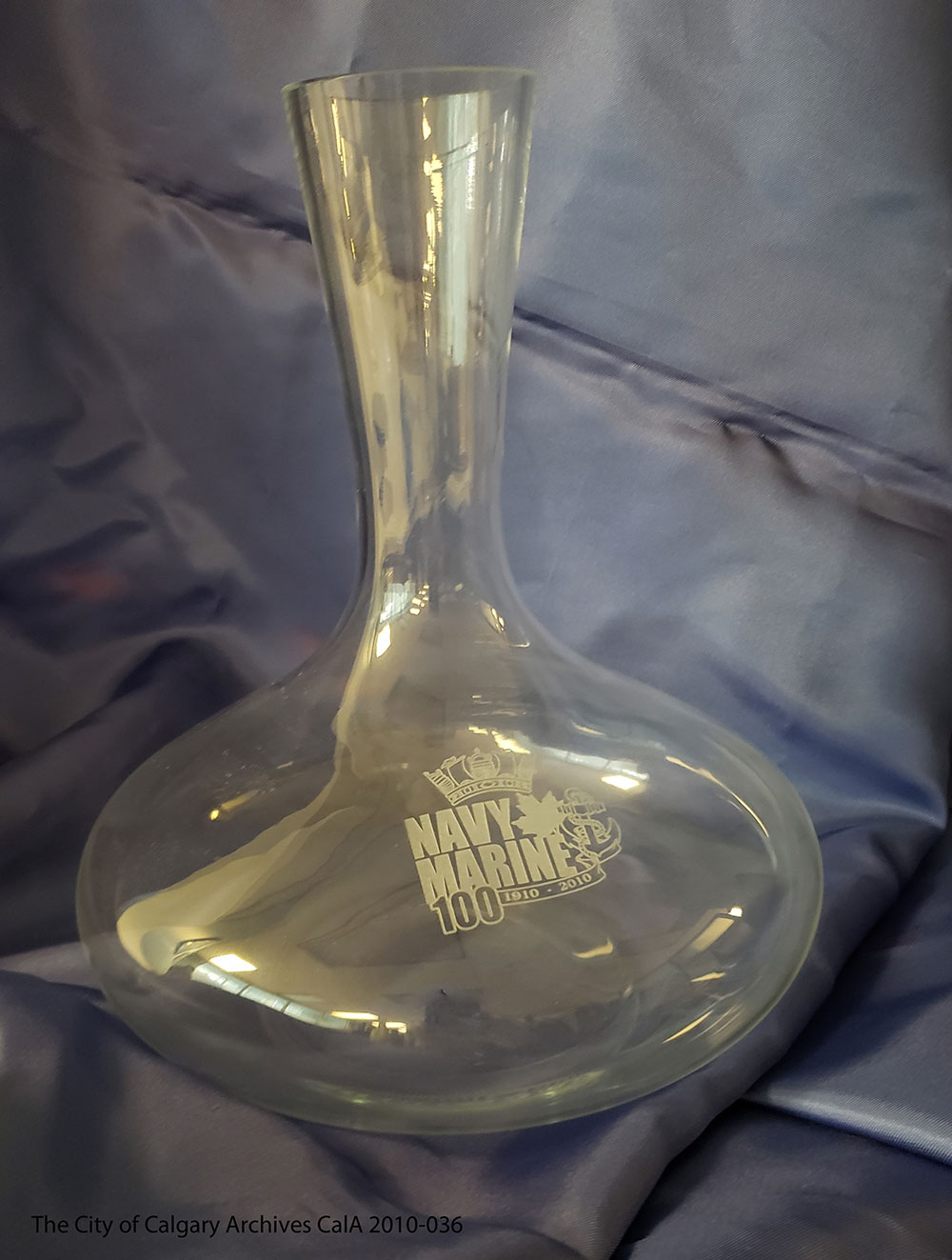
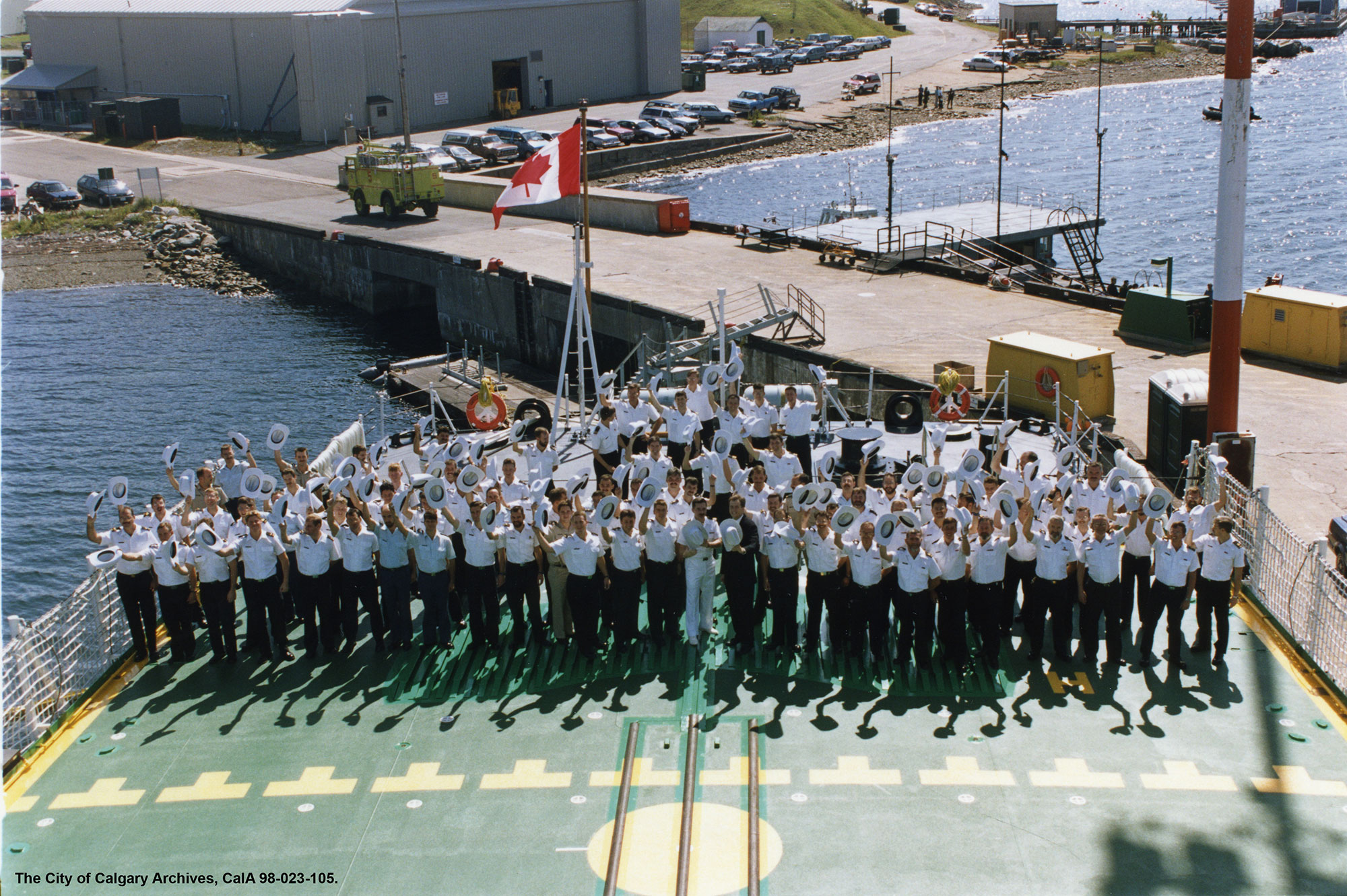
Crew of the HMCS, 1995
The crew of the HMCS Calgary raise their white cowboy hats in honor of the 1995 commissioning of a second Royal Canadian Navy ship to carry this name.
Tommy Soldier
This replica sculpture of a First World War Soldier (or Tommy) was presented to The City of Calgary in recognition of The City’s support for the Calgary Soldiers' Memorial, which was unveiled next to Memorial Drive on April 9, 2011.
The Soldier’s Memorial is an installation of six marble slabs inscribed with the names of Calgary-based soldiers who died in World Wars I and II and Afghanistan.
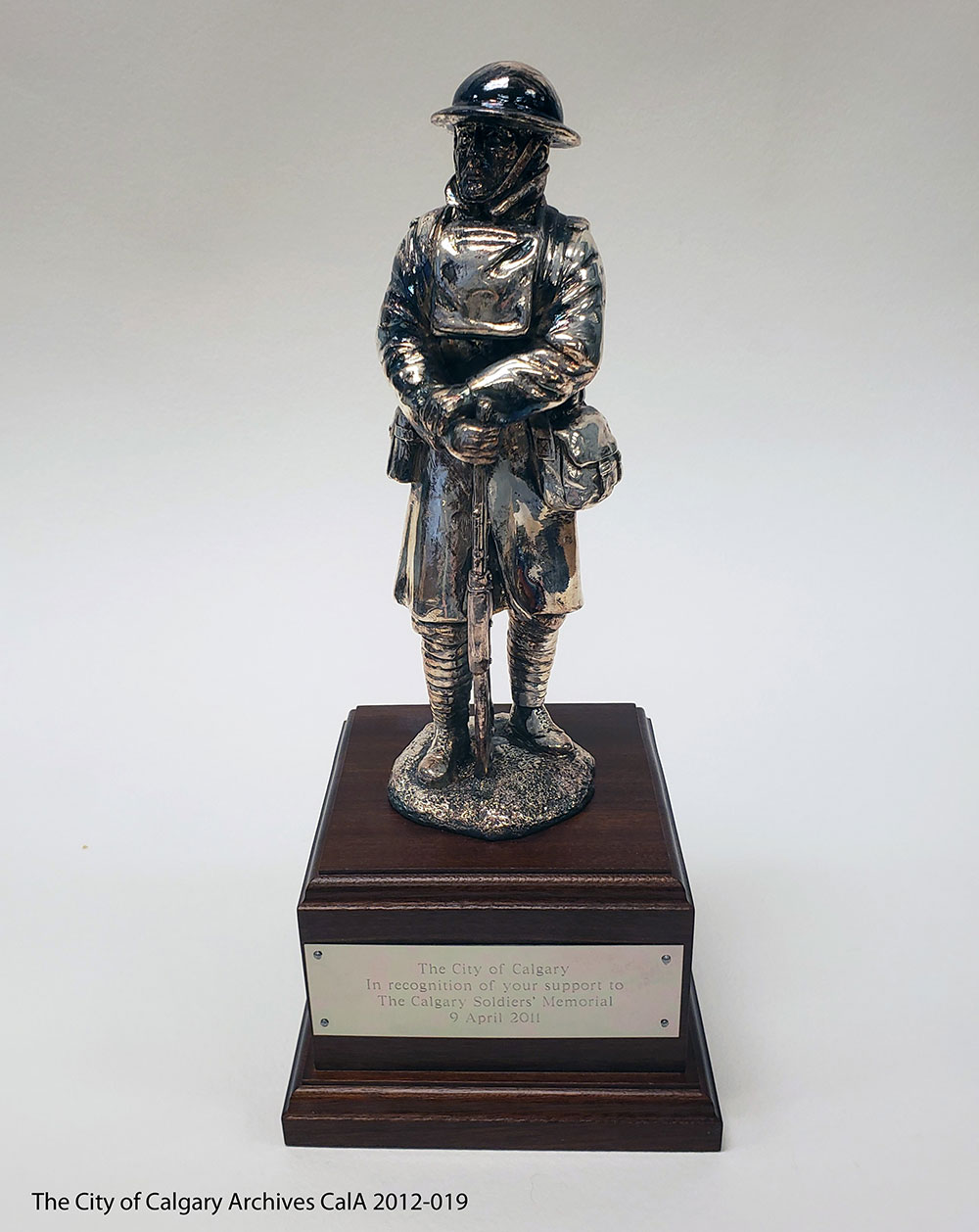
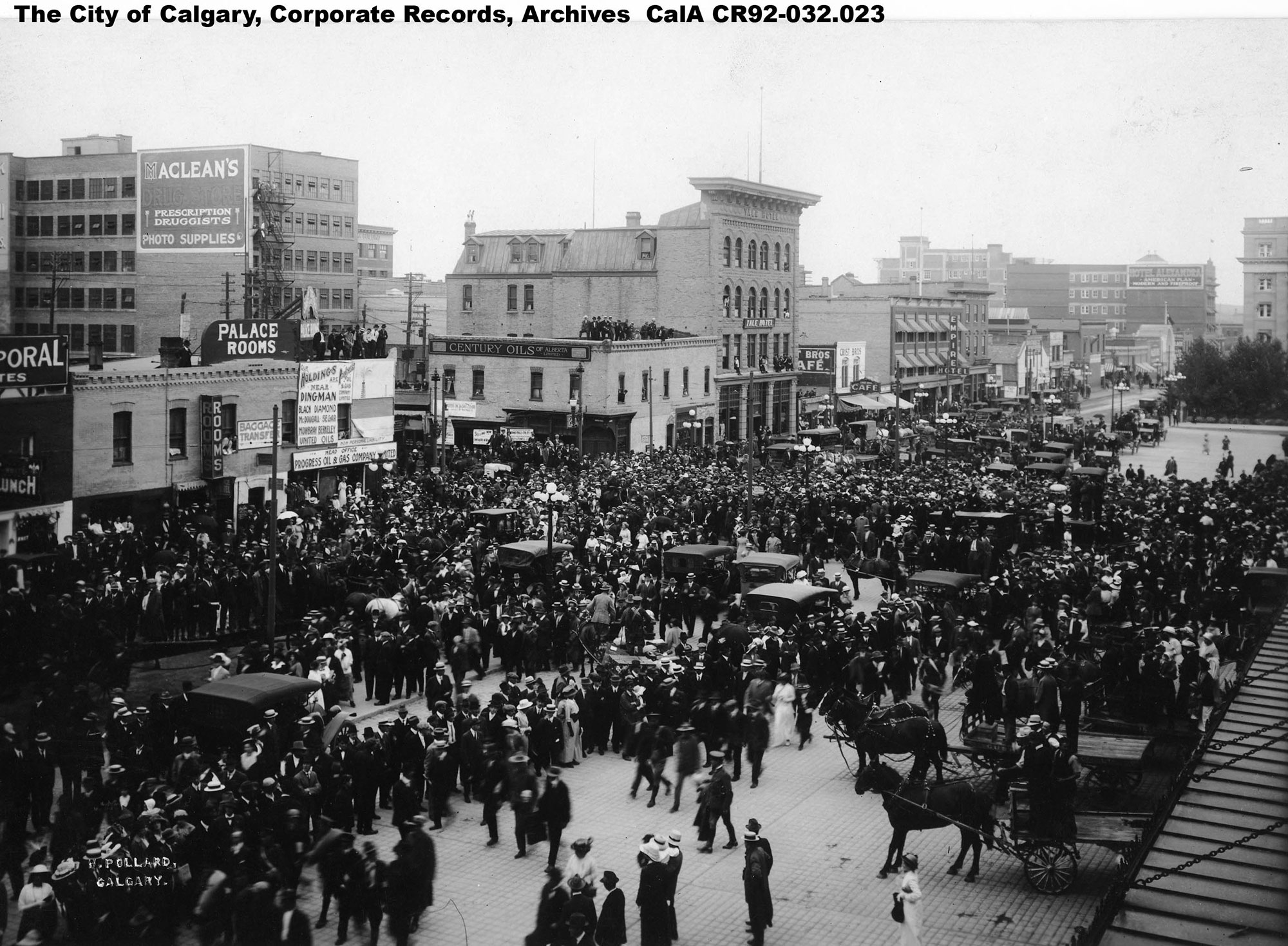
Crowds outside railway station, H. Pollard Photography, 1914
Crowds outside the railway station are giving a send-off to the troops leaving for overseas.

